I recently finished reading a chapter from “The History of Russian Art” on the applied arts in Kiev and the southern Rus’ principalities from the 9th-13th centuries. This article by noted scholar B.A. Rybakov was a lengthy read, but was very interesting in the wide range of examples of applied art, as well as his in depth discussion of the pagan and Christian influences which mixed together on everyday items. He pulls examples from various art forms, including sculpture, embroidery, illumination, jewelry, stone-carving, enamelwork, and Christian symbology (icons, crosses, church decorations) to shed light on the beliefs and artistic tastes of pre-Mongol Rus’.
The Applied Arts of Kievan Rus in the 9th-11th centuries and the Southern Russian Principalities of the 12th-13th centuries
A translation of Рыбаков, Б.А. «Прикладное искусство Киевской Руси IX -XI веков и южнорусских княжеств XII-XIII веков.» История русского искусства. Том I. Москва, 1953, с. 233-297. / Rybakov, B.A. “Prikladnoe iskusstvo Kievskoj Rusi IX-XI vekov i juzhnorusskikh knjazhestv XII-XIII vekov.” Istorija russkogo iskusstva. Vol. 1. Moscow, 1953, pp. 233-297.
[Translation by John Beebe, known in the Society for Creative Anachronism as Master Ivan Matfeevich Rezansky, OL.]
[Translator’s notes: I’ve done my best to convey both the meaning and style from the original. Comments in square brackets and footnotes labeled “jeb” are my own. Images labeled “jeb:” were added by me. This document may contain specialized vocabulary related to embroidery, archeology, Eastern Orthodoxy, or Russian history; see this vocabulary list for assistance with some of these terms. This translation was done for my own personal education, and is provided here as a free resource for members of the Society for Creative Anachronism who may be interested in this topic but are unable to read Russian. I receive no compensation or income for this work. If you like this translation, please take a look at other translations I have made available on my blog.]
[The article in the original Russian can be found here:
https://yadi.sk/d/3W8-vpPd3WbPuC. ]
Applied Art in Everyday Life
On the broad squares of populous Kiev, at the noisy royal feasts as glorified by the bylini, in village brotherhoods and conversations, in the palaces of the boyars and the huts of the serfs – everywhere, we see the sparks of artwork. The various items produced by artisans which decorated everyday life and transformed simple items into works of art were called uzoroch’e by medieval Kievans. Uzoroch’e was everywhere; it filled the outer world created by the hand of man, and often this decoration on clothing, the design on a silver bangle, or the carved handle of a ladle can reveal the thoughts of these Russian folk more fully than preserved items of monumental art.
The semi-pagan images in the Lay of Igor’s Campaign, the symbolism of the bylini and fairytales, and the fantastic characters in the white stone carvings of Vladimir may be fully understood only against the backdrop of its multifaceted, rich and exquisite applied art. In the cities of Kievan Rus’, art ceased to be only materialized nameless folklore as it had been in ancient times. Here, the master artisan, with his students and artistic schools, stood out, signing works with his own name. The work of the best goldsmiths was monitored by a chronicler, who wrote an admiring review of one artisan’s jewelry-making skills on the parchment of his books: “He decorates so beautifully that I am unable to describe a single item sufficiently well: for many from Greece and other lands say, ‘Nowhere else does such beauty exist.'”[1]Zhitija svjatykh muchenikov Borisa i Gleba. A. Abramovich, ed. Petrograd, 1916, p. 63.
This Kievan chronicler, admiring the silver tomb of Boris and Gleb decorated with nielloed images of the saints and “various large crystals” in Vyshgorod in 1115, was not alone in his assessment of the Russian artisan. In Germany, a priest named Theophilus from the Helmershausen Monastery near the city of Padersborn, author of a large tract about the techniques of jewelry making (Schedula diversarum artium)[2]Published Vienna, 1873. informs the reader in the Preface of an honored list of countries whose artisans are renowned for various types of artwork. In this list, Rus’ (“Russia”) of the 11th-12th century is listed in second place behind Byzantium as the inventor “of meticulous enamel and various kinds of niello.”[3]idem., p. 9. Furthermore, the Russian jewelers were followed by the Arabs, Italians, French, and Germans.
In the sacristy of the the Cathedral of St. Godegard in Hildesheim, there is preserved a folding cross of 12th-century Russian make with an inscription.[4]Mjasoedov, V. “Ierusalimskij krest v riznitse sobora v Gil’desgejme.” Zapiski Otdeleneja russkoj i slavjanskoj arkheologii Russkogo arkheologicheskogo obschestva. 1918 (XII), illus. III-IV. In Constantinople itself, the refined Byzantine Ioann Tzetzes glorified in Greek verse a delicately carved bone pyxis from Rus’. He compared the 12th-century Russian carver to the lengendary Daedalus.[5]Kondakov, N. Russkie klady. St. Petersburg, 1896, p. 80. This gives us confidence to believe the aforementioned review. Indeed, many coming from Byzantium and other countries exclaimed: “Nowhere have we encountered such beauty, even though we have seen the tombs of many saints.” It is a pity that this magnificent work perished, it seems, at the hands of Tatar invaders, as did many other works of Russian art.
Decorative origin permeated all sides of private and social live in medieval Rus’. Social differences amongst the population of the Russian principalities quite clearly had an impact on applied art – on its material, style, and subjects. Items from village burial mounds were made from cheaper materials; in addition, within the villages, we distinguish social and property inequality. Urban items are likewise non-homogenous: there are mass produced items that belonged to simple townsfolk, and items from artisans to the royal courts into which went gold, precious stones, and many months of painstaking labor. Rural art, known to us almost exclusively from metallic items, was permeated by ancient, pagan elements. We can only imagine the wealth of folk, peasant artwork from ethnographic materials: carved wood, marvelous embroidery, painted spinning wheels, beautifully patterned fabrics. We have the right to imagine all of these belonging to the peasants of the 10th-12th centuries. Urban culture is much more known to us, in particular that of the upper ruling classes.
Clothing was sewn from patterned fabric, and the surface was embroidered in colorful silks, gold or silver threads, and dyed wools. Sometimes, the woven or embroidered patterns were produced using a more simple technique – already by the 10th-11th centuries in Rus’, the practice of colored fabric stamping was in use. Silk and gold samite are found not only the graves of wealthy individuals, but even in those of simple townsfolk, and bands are found even in the graves of peasants.

jeb: Part of the sakkos of Metropolitan Aleksey, 14th century. Nikol’skij, V. Drevnerusskoe dekorativnoe iskusstvo. Petrograd, 1923, illus. 1. 
jeb: Reconstruction of the pattern from a fragment of gold brocade, 12th century, found in a tomb of one of the princes of Vladimir-Suzdal’. Guschin, A. Pamjatniki khudozhestvennogo remesla drevnej Rusi. Moscow-Leningrad, 1936, plate XXIV.
The sumptuous clothing of the boyars was decorated with sewn-on plaques with relief and colored patterns, and with solid rows of seed pearls.[6]Nikol’skij, V. Drevnerusskoe dekorativnoe iskusstvo. Petrograd, 1923, illus. 1. Particularly extravagant, based on medieval depictions, were their outer cloaks, the korzna. These were made of the most expensive imported fabrics – olovir,[7]jeb: An imported purple fabric. samite, and others. The complex fabric patterns, aside from their colorfulness, are also interesting for their subjects: lions, elephants, birds with women’s faces, horsemen, winged bulls and leopards, bright flowers, eagles – the entire colorful world of eastern fantasy shown off on the shoulders of the royal household members.[8]Guschin, A. Pamjatniki khudozhestvennogo remesla drevnej Rusi. Moscow-Leningrad, 1936, plates XXIII and XXIV.
Trade in Eastern silk fabrics had by the 11th century almost become monopolized by Russian merchants. Before the Crusades, Rus’ was the most important mediator in trade between East and West. It is not without reason that a French poet from the 12th century, when describing a beautiful woman, spoke of her lovely clothing of “Russian silk.”[9]Spitsyn, A. “Torgovye puti Kievskoj Rusi.” S.F. Platonovu – ucheniki, druz’ja i pochitateli. St. Petersburg, 1911, pp. 240-241. Medieval Russian townsfolk would have constantly seen before their eyes clothing on which Russian patterns mixed with the patterns of Iranian and Byzantine fabrics, which had broad international circulation. Although of these fabrics, only a few fragments have survived to modern day, we can certainly account for their creativity in the works of Russian artisans.
The wide scope of activity by “merchants in gold and silver” is apparent in the world of jewelry making.
The golden crowns of the Russian princesses were decorated with enamel and pearls. Golden chains depicting birds dangled from the crown to the shoulders, ending in kolty decorated with sirens, leopards, and flowers. Women’s necks were decorated with various types of “grivny,” consisting of necklaces made up of large medallions, as well as various kinds of beads, amulets, lunnitsy and crosses. This was all created subtly and gracefully, twisted with swirls of wire and strewn with the finest granulation. Women’s sleeves were gathered at the wrist by wide silver bracelets, richly decorated with images of birds, centaurs, gusli players, and dancers; their fingers were decorated with rings.[10]Kondakov, N. op. cit., plates I-XIX; Guschin, A. op. cit., plates XV, XX; Khanenko, B and V. Drevnosti Pridneprov’ja. 1902 (V), plates XV, XVI, XXIX. Princes and boyars were dressed in patterned cloaks, and on their heads wore special hats with fur edging and and a patterned top. Their collars and cuffs were decorated with embroidery and metallic thread. Their jackets were buttoned with diamond-shaped clasps or tied with bright cords. Belts were decorated with silver or gold plaques. They word soft leather shoes, dyed in bright colors and decorated with pearls.

Cast brass arch, by the artisan Konstantin, from the princely castle of Vschizh, near Bryansk. Second half of the 12th century. State Historical Museum. 
Cast brass arch (reverse), by the artisan Konstantin, from the princely castle of Vschizh, near Bryansk. Second half of the 12th century. State Historical Museum.
In addition, warriors tried wherever possible to decorate their weapons and armor. Gold- and silver-plated helmets were charged with niellated-silver patterns or images of saints. Suits of chainmail had brass edges. The sword pommels and scabbards of swords were decorated with silver wire, engraved silver, and cast plates (on the ends of the scabbard) depicting birds, masks, rows of knotwork, and animal faces. Flail heads were decorated with relief images of birds. Particularly exquisite are the ceremonial axes of state. Here we find birds depicted on either side of the handle, as well as artfully designed initials (for example, the letter A in the shape of a snake pierced by a sword).
Warhorses, the soldier’s companion, were likewise a subject of the jeweler’s art. Bridles with bronze plaques, with animal heads on the strap ends, silver lunnitsy on their harnesses, saddles made of “burnt gold,” and flowery or patterned saddle-cloths decorated their horses. Bone plaques on quivers depicting quirky, interwoven, fantastic beasts, carved knife handles, graceful folding combs, spurs with miniature gold flowers, battle shields with heraldic symbols, and a multitude of other various designs completed a warrior’s kit.
The prows of warships were decorated with carved dragon heads, held high above the water, and sails were sewn from colored silk.
The “honored feasts” of the prince with his household, as described by the epics, chronicles and even Christian preachers, were a unique exhibition of princely wealth: the tables were set with gold and silver dishes, drinking horns with hammered rims, glass goblets, and carved chalices;[11]Rzhiga, V. Ocherki byta domongol’skoj Rusi. Moscow, 1929, p. 24. the floors were covered with colorful eastern rugs.
Servants provided water for washing to the feasters in bronze aquamanuals shaped like animals or riders. Next to the tables were incense burners (“ukropnitsy”), also shaped like animals; they were filled with aromatic herbs, their smoke escaped through openwork cuts in the body, and the flames burst through the eyes and ears. The rooms were lit by candles in candlesticks which stood upon animal paws, while large princely feasting halls most likely were also lit by bronze chandeliers with 12 to 16 candles. These chandeliers were also seen in churches from the 10th-12th centuries. Candles were stuck onto the sharp thorns of bronze branches, next to which sat birds, the obligatory companions of fire and the prototype of the firebird.
Feasting dishes were wildly decorated. Various forms of jewelry making were used, and we see various subjects, including motifs from Russian stories and of courtly entertainment: depictions of musicians, wrestlers, dancers, gladiators, and horsemen. Alongside the Russian utensils, we also find foreign items. Sometimes, the caring hand of the prince’s treasurer marked the cost of each item on the bottom.[12]Spitsyn, A. “Dve serebrjanye chashi.” Zapiski Otdelenija russkoj i slavjanskoj arkheologii Russkogo arkheoloicheskogo obschestva. Vol VIII, iss. 1, 1906.
Royal treasuries, the repositories of huge artistic and material wealth, were shown to the ambassadors of foreign governments, who admired the abundance and beauty of their contents. Prince Svyatoslav Yaroslavich took his guests to his treasury as if it were a museum. It is possible that the Russian princes had the same custom as the Byzantine emperors, of arranging exhibitions of artwork, weapons and jewelry in the palace on special days. Prince Izyaslav Yaroslavich, when he arrived in Germany in search of allies, amazed the German nobles with the splendor of the items he brought with him.
How the interior of the palaces were richly decorated is not known to us. Unfortunately, we do not know the shape or decoration of their furniture. Beds of yew, golden thrones, tables set in a semicircle, weapons hanging on the walls, carved “princelings” [reznye “knjaz’ki”] — all of these are known only by hints in the texts and illustrations from the Chronicles.
Decorative art also extended to personal items. Boxes (caskets) were decorated with patterned overlays, bone and bronze combs were decorated sometimes with geometric designs, sometimes with depictions of horses, boats with sails, bears, etc. Bone was turned on a lathe to create chess and checkers pieces, and playing dice.
Especially lovingly decorated were books, those “rivers watering the universe” with their wisdom: lines of cinnabar, well-designed capital letters, sparkling illustrations and miniatures with gold and bright colors like enamel, slender branches upon which perch panthers, peacocks, and pheasants, snakes intertwined around lines, and stylized letters under birds. Book covers and bindings were encased in fine silver, with inset precious stones and gold plaques with enamel designs. It was not without reason that contemporaries said that the value of certain book was so great that it was “known only to God,” or that during a fire, books were the first times to be saved.
The cathedrals in the city centers were a focus of creativity. Along with the “artisans of stonework” there were painters, mosaicists, carvers of slate and marble, “smiths of brass, silver and gold” who cast chandeliers, gonfalons, crosses, icon-lamps, and the decorated, holy dishes, all decorated with every trick of the trade. Scribes copied holy books, jewelers clad them with priceless covers, the skillful hands of palace embroideresses embroidered silk podeai, altarcloths [“antiminsy”], and veils which covered the altar. Roofers framed the zakomary with golden lace of pierced brass, and artisans with the finest touch decorated the church doors with acid-etched lines.[13]Gal’nbek, I. “O tekhnike zolochenykh izobrazhenij.” Materialy po russkomu iskusstvu. Vol. I. Leningrad, 1928, pp. 22-31.
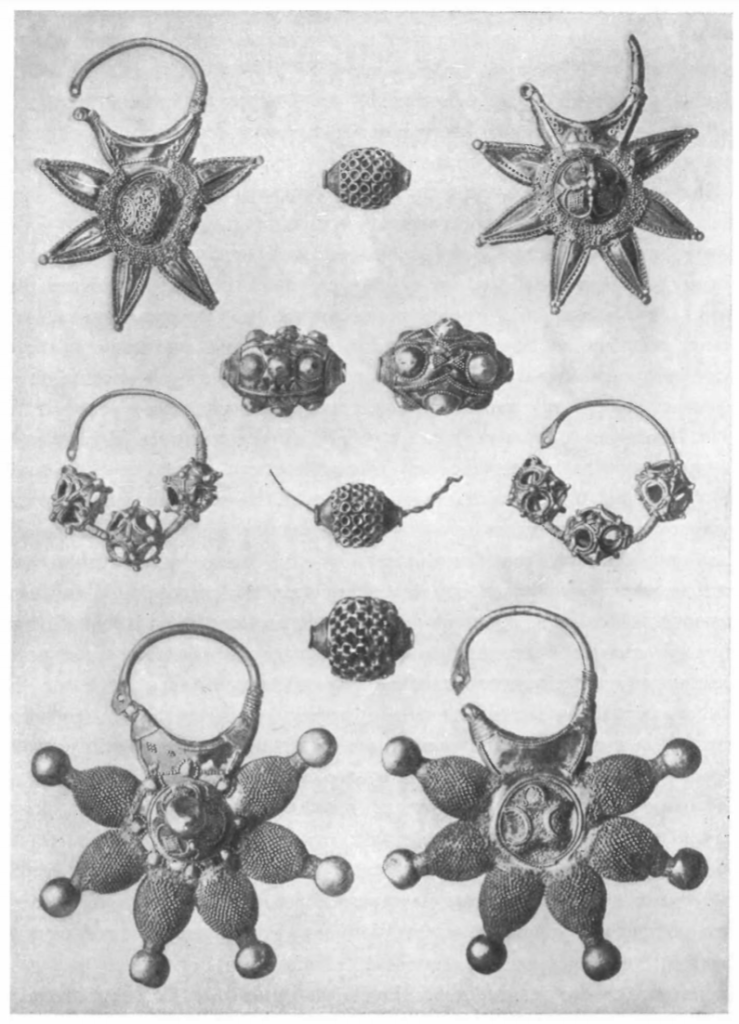
It is possible to say that the medieval cathedral was the “Dove-Book” [“Golubinaja kniga”] of folk creativity. A Russian chronicler from the 12th century was justified when he wrote about a new church that it was “filled with all the virtue of the church, and with every subtlety that can be dreamt of.”[14]Hypatian Chronicle, under year 6683 (1175).
Artistic Craft and its Technique
Medieval Russian craft was more or less the foundation upon which all of the material culture of Kievan Rus’ was based.[15]Rybakov, B. Remeslo drevnej Rusi. Moscow, 1948.
In villages, specialist smiths provided their fellow villagers with all possible iron items that were necessary for village life, fishing, felling trees, hunts, and warfare. Russian smiths empirically managed to find the form for axes which spread throughout all of Eastern Europe.
Village potters created dishes with the help of a potter’s wheel, and stamped them with their maker’s mark. A favorite Slavic decoration on clay pots was a combination of wavy and straight lines. It is possible that the waves were a persistent symbol of water (a connection still seen in modern times), and therefore was not coincidentally placed on the body of vessels intended for liquids. Gradually by the 13th century, wavy lines were partially placed by a single line. Baking vessels with a folded edge were very consistent and existed until the 19th century. Russian pottery influenced that of the Swedes; it appears that the Varangian squads who came to Rus’ took this form of ceramics back with them.
Jewelry is best able to fully acquaint us with folk applied arts. At the dawn of the Russian state, creation of jewelry in the villages was a women’s art. Women weaved various items from wax cords, which were then covered with a layer of clay, the wax was melted, and it its place, molten metal was poured. The result was a beautiful item that appeared to have been woven from wire. But, already by the 10th century, bronze and silver casting ceased to be a women’s handiwork: it was taken over by male smiths. Along with casting using wax models, they began casting using clay and stone molds.
By studying various items from Russian village burial mounds from the XI-XIII centuries, it is possible to ascertain that amongst burial mounds which were located closely together, one can find items which were cast using one and the same mold, that is, which came from the same artisan’s workshop. By placing the location of these finds from a given artisan on a map, the sales area for that artisan can be determined. The size of these areas was relatively small, with the furthest points no more than 10 kilometers from the workshop where they were made. Here we see justified the English medieval rule, that markets and workshops should be located close enough to the villages that they served, such that a peasant could travel to buy what he needed an return home within a single day. The small sales areas of Russian village artisans completely agree with this condition. At the borders of one region, another would begin. On the territory of the Rus’ lands from the 11th-13th centuries, a multitude of such workshops existed side by side.
Jewelry used in young women’s headwear was particularly elegant. For example, in the land of the Radimichi along the River Sozh, artisans created suspended jewelry based on a ring with a semicircular shield at the bottom. From the bottom and sides of this shield there emerged seven rays, giving the entire item the appearance of a beautiful bronze star. The neighboring Vyatichi had similar temple rings, except in that the ends of the rays broadened and turned into blades. Later, these blades were surrounded by metallic lacework, and inside the circle would be the images of horses or birds. These seven-bladed temple rings, worn in groups of three on either side of the forehead, created a very particular appearance to headwear. Their elegant silhouette would gracefully harmonize with the kokoshnik and the embroidery on their clothing.[16]Artsikhovskij, A. Kurgany vjatichej. Moscow, 1930, pp. 35-47; Rybakov, B. Radimichi. Minsk, 1932, plate IV.
Metalwork was not limited to casting. Cast items were additionally decorated with stamped and engraved patterns. Special punches were used to stamp various designs. Sometimes, the stamping was done using a toothed, steel wheel. A typical stamped design consisted of a triangular crenate form placed in two rows, creating a “wolf’s teeth” appearance. Bronze bracelets from the Novgorod region were particularly sumptuous. As opposed to other regions, where bracelets woven from wire were predominant, here artisans prepared them from broad strips of metal, which left much room for ornamentation. Alongside simple designs made up of circles, triangles, and dots, we also see more complex designs. Knotwork from two bands is seen, sometimes angular, sometimes smooth and rounded. The background around these bands was stamped with a complex dotted pattern, offsetting the smooth bands of the knotwork. Sometimes we find stylized flowers and Eastern S-shaped images of juicy tendrils. Sometimes, it is as if the stamped decoration of a bracelet reproduces the diamond patterns of complex woven fabric.[17]Spitsyn, A. Kurgany Peterburgskoj gubernii i raskopkakh Ivanovskogo. St. Petersburg, 1896, plates III, IV, XII.
On many rural items, we can see an attempt to reproduce urban pieces. Urban filigree patterns are reproduced using simpler casting techniques.
Among materials excavated by archeologists from rural burial mounds, we often find items created by urban artisans. This can particularly be seen from the existence of specially produced items from large Russian cities in the 12th-13th centuries designed for mass production. In the cities, they produced inexpensive items which were distributed by gostebniki (peddlers) to the furthest corners of Rus’; these included slate spindles, crosses with yellow champlevé enamel, etc. Another way these urban items became widely distributed was through the existence in the villages of “young squads” [molodshaja druzhina] which in times of war would gather “in the cities.”
In this way, by the time when urban culture of the 12th-13th centuries had strayed far from the folk culture which had nurtured it, various new connections had been created between urban and folk culture, allowing a famous leveling of art. Urban patterns and international subjects including winged leopards percolated into the countryside as well. This process of interplay between the city and country was interrupted by the Mongol invasion.
Rural applied art was not limited to geometric designs on bronze and silver. As we have seen above,[18]jeb: The author is referring to an earlier chapter on the art of the ancient Slavs. stylized images of various animals, beasts and birds, tightly associated with magical ideas of paganism, were in widespread use in the countryside. Human images figure significantly less frequently in materials which have survived to modern day. They doubtlessly played an important role in embroidered designs, but appear not to have been used on metallic items. Speaking about folk decorative craftsmanship, we must note that every region had its own particular forms of ornament, forms of items, and subjects depicted. Ancient tribal areas, separated by woodlands, still lived their own separate artistic lives, although with every passing century the commonality of the “all Russian” culture became stronger.
Urban craftwork of Kievan Rus’ was quite diverse, multiform and technically equipped. The majority of urban dwellers were artisans. Entire streets and even neighborhoods were named for the type of art which was predominant: Gonchary (“Potters”), Gonsharskij konets (“Potter’s End”), Kozhemjaki (“Leatherworkers”), Kuznetskaja ulitsa (“Smiths Street”), Kuznetskaja vorota (“Smiths Gate”), Plotnitskij konets (“Carpenters Street”), et. al.
Modern-day archaeological excavations have uncovered a multitude of medieval Russian art workshops with their equipment (ovens, forges, tanning vats, anvils, etc.), instruments, supplies of raw materials, semi-finished items, finished goods, and old items brought to the artisan for repair. Judging by these workshops, as well as by data from written sources, it appears that artisans were divided into profession not based on technical skill, but by the end product, that is, by the category of item which was created by a given artisan. There were very few artisans who in their work practiced only one given technical skill, for example only forging or only stamping, or only filigree-work. Each artisan was universal terms of their familiarity with various technical skills: he was able to forge, and to cast metal, and to stamp, and to engrave. He would have had the equipment allowing him to carry out his diverse work. The division of labor is seen in that one artisan created weapons, another quivers, a third women’s jewelry, and a fourth book covers.
In addition to those with such broad categories of specialty, there were also artisans with very specific skills, for example, nail-makers. At the very minimum, there were in Kiev more than 60 various artistic professions. Based on their social standing, artisans were divided into royal artisans [Rus. votchinnye, “fief-based”], which were tied to a princely court, and urban or posad-based artisans. The former category also includes monastery craftsmen. Royal artisans typically worked on spec; they were little concerned with quickening the process of their art and were able to spend long months of meticulous, loving refinement on any given aspect. The majority of items from 12th-13th century treasure troves were made by the hands of such courtly artisans. It was namely these skilled craftsmen belonging to a princely or boyar court who are mentioned in the Russkaya Pravda,[19]jeb: The “Rus’ Justice,” 12th-century collection of Russian laws. which imposes a rather large fine of 12 hryvnia for their murder.
By the 11th-12th centuries, urban artisans were already to a significant degree tied to the market, which required them to find new ways to increase the speed of their production. At the same time, they did not wish to stray too far from their royal brethren in their artistic ideals, and attempted to copy them in the form and finish of their jewelry. Urban artisans had to reckon with both the natural desire to reproduce expensive items of courtly artwork, and with the legitimate concerns of the market to increase the volume of production. In the archaeological record, we are able to see how urban craftsmen were cleverly able to solve this problem. They invented technological methods which allowed them to imitate aristocratic examples without resorting to the same laborious individual creation of each item. Chasing was replaced with stamping items against special convex matrices, and engraving was replaced with casting using special molds,[20]Kondakov, N. op. cit., p. 144, illus. 93. as were extremely complex granulation and filigree.
Particular attention was given by artisans to the production of stamps and casting forms which allowed them to easily create for the market entire series of items, which in appearance were similar to the expensive items emerging from the courtly jewelers’ workshops.
If the rural market for sales had a radius of about 10-20 kilometers, for urban artisans, we need to significantly increase that number; some products might have had a range of 200-400 km, and for others, it may have even been as high as 1000 km. On the even of the Mongol invasion, Russian cities, like those of the advanced countries of Western Europe, began to overthrow the primitive economy of feudal society, breaking up the narrow confines of subsistence farming and entering into a more or less wider market.
Many Russian craftsmen worked with apprentice assistants; some workshops required the participation of several men. We know that even in the 11th century there existed hired labor. Sometimes, between a master and his apprentices, conflict would occur. One such situation is described Patericon of the Kiev-Pecherskij Monastery: a master Alimpius, an icon-painter and jeweler, was upset that his assistants had taken advantage of his illness and accepted private orders. The offending apprentices were punished. This occurred in the early 12th century, around the time when the urban population of Kiev proved itself in the famous 1113 uprising against the boyars.[21]Paterik Kievo-Pecherskoj lavry, p. 171.
It is possible that in larger Russian cities in the 12th-13th centuries, there already existed craftsmens’ guilds similar to those of Western cities, and that the elevation of an apprentice to a master was tied to the production of a specific “item”. In the sacristy of the Novgorod St. Sophia’s Cathedral, there are two 12th-century vessels with exquisite niello-work.[22]Pokrovskij, N. “Drevnjaja Sofijskaja riznitsa v Novgorode.” Trudy XV Arkheologicheskogo s’ezda. Vol. 1. Moscow, 1914, pp. 42-60, plates III-V. One was made in the second quarter of the 12th century; the second was made a bit later, clearly in imitation of the first down to the finest detail. The bottom of each has an inscription according to a specific formula, certifying that the given vessel was created by a specific artisan (the older one by “Bratilo”, the younger one by “Kosta”). It is possible that here we see one of the earliest examples of a “test” for the title of Master Artisan.
The urban artisans who created the shimmering culture of the Russian princedoms were literate. As early as the 11th century, a master potter who created an amphora for wine, signed in the wet clay: “This pot is full of grace.” On stone casting molds, bronze items, and items with enamel, we find the inscriptions of their artisans.
Let us look at a few of the technical methods used by these artisans of decorative art. One of the most important techniques was metal casting. Casting was used to create a wide number of copper/brass, bronze, silver and pewter items, from tiny buttons one’s collar and small pectoral crosses to enormous chandeliers suspended from patterned bronze chains. Items were cast either in stone molds, where an artisan carved the image and had to pay attention to how the image would be mirror reversed when cast, or they were created using previously-prepared was models. Several stylistic features can clarify which of these techniques was used (for example, hair lines seen on seals). Working with wax models, which sometimes preserved even fingerprints on an item, allowed greater freedom and fluidity of form.
As examples of complex brass casting, see two arches from the princely castle of Vschizh, near Bryansk. Both arches, which are stored in the State Historical Museum, identical (see image above.) The arches are formed from pierced bronze lacework from interwoven bands. Similar woven designs are also found in illuminations, and in jewelry, and in architectural decorative carving. Amidst the weaving, there are three circles with birds inside; above, a bird spreads its wings similar to a heraldic eagle. In the side borders, birds turn their heads softly around to clean their tails, which resemble flowers. Below the circles, within the woven belts, crawls some kind of beast from a medieval bestiary. In the side offshoots, there are two birds, which turn toward the stylized lilies located between them. In order to attach the arches to poles, each has two bushings at the bottom in the shape of long dragons’ heads, holding the archway in their mouths. Similar dragons are known from the architectural carvings from the Vladimir-Suzdal’ princedom.
On the rear of these arches, there is a magical spell, written by the artist onto the wax mold before the casting (possibly to ensure the casting was a success): “Lord, help Your servant Konstantin.” Master Konstantin, who lived in the second half of the 12th century, found good taste and great technical skill.
Along with casting, forging and chasing of silver, brass and gold were widely used. Complex dishes were chased to shape, and silver items were chased for decoration. Artistic chasing was done not only with punches, as was done in the countryside, but also with more complex techniques which created high relief. Repoussé [Rus: обратная чеканка, obratnaja chekanka, “reverse chasing”] was used, where a sheet of silver was placed on an elastic cushion of resin or pitch and was deeply embossed. One of the oldest techniques in jewelry-making was the use of thin twisted wires (filigree [Rus: филигрань, filigran’, or скань, skan’]) and very small grains (granulation [Rus: зернь, zern’]) of gold or silver.
Long ago, even among the artisans of the ancient Slavic princes of the 6th-7th centuries, there arose a desire to reproduce fine Eastern works using filigree and granulation. In that distant past, instead of drawing wire using a drawing plate, it was created with forging or casting, while grains were created by sculpting small balls of wax and then casting them in metal. These imitations were quite coarse. By the 9th-10th centuries, Russian artisans learned how to do actual filigree and granulation, which subsequently became widespread. We see the combination of these techniques on 10th-11th century temple rings from Volynya. Granulation covers the face of the rings, while filigree frames the ring with braided lacework. The hands of the royal court jewelers produced works that are exquisite in their subtlety: granulated lunnitsy, amulets, beads, and star-shaped kolty.
As an example, let us point to the kolty from the 1906 Tver treasure hoard.[23]“Tverskoj klad 1906 goda.” Zapiski Otdelenija russkoj i slavjanskoj arkheologii Russkogo arkheologicheskogo obschestva. Vol. XI. 1915, plates I-II. Each ring has a semicircular shield (as also seen on temple rings), to which there are soldered six silver cones with spheres on the end (see image above). Each cone was first soldered with a multitude of miniature rings made from thin wire that was 0.02 cm thick. The diameter of each ring is about 0.06 cm. Determining these dimensions required the use of special microphotography. In total for a single kolt, the jeweler had to solder around 5000 such rings. But, this was not the end result for this artisan’s intensive labor: the rings merely serve as pedestals for granulation, and each ring is seeded with a tiny granule of silver 0.04 cm in diameter. As a result, every grain would have shone and created a play of light with the slightest turn of the head.
Naturally, only a court jeweler who had few customers would have been able to expend the time necessary for such work. Urban jewelers created similar kolty using a special casting mold, where each grain had a corresponding small depression in the wall of the mold. Cast kolty were somewhat coarse, but they could be cast by the dozen. Similar “imitation”-style molds date to the early 13th century (see image above), as seen in a find from the ruins of the Church of the Tithes in Kiev. When in 1240 the Kievans defending the city from the Mongols “fled to the church vaults,” the church collapsed, burying the last of Kiev’s citizens. Among them was a master jeweler, who took along with him his most prized, painstakingly created casting forms for imitating granulation-work.[24]jeb: More details about “Kievan”-type imitation molds and this unfortunate master jeweler can be found in this article: Корзухина, Г. Ф. “Киевские Ювелиры Накануне Монгольского Завоевания.” Советская Археология, 14 (1950), с. 217–244. A translation of this article can be found on my blog here: Kievan Jewelers on the Eve of the Mongol Conquest. Similar molds also existed in the 13th century on the Volga, where Batu sent his Russian captives.
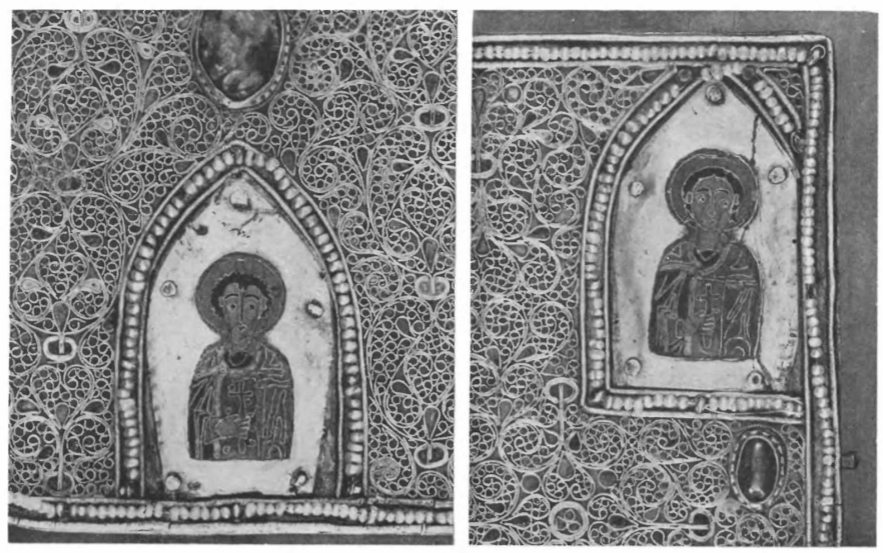
A large role was played by filigree in the development of certain forms of ornamentation. Finished items were created from filigree wires where the gold wire itself made up the frame of an object. For example, temple rings with three filigree beads made from thin wire were very common. Despite the comparative simplicity of the artisan’s drawing, the filigree created a high level of gracefulness and lightness. A second use of filigree was patterned filigree, soldered to flat surfaces. Usually these were laid out as spirals into various patterns. Spirals were the most natural form of this use of the material.
Spiral patterned filigree had great influence on decoration in painting, book illumination, and sculpture. In the second half of the 12th century, spiral decorations were widely used, but by the 14th century they became predominant. The best examples of preserved gold filigree come to us from Staraya Ryazan’.[25]Kondakov, op. cit., pp. 85-87. A famous treasure trove found in 1822 contained filigree bracelets. Pectoral medallions have a unique two-layer filigree: the lower layer lies flat against the gold plate, while the upper later is soldered to the wires of the lower layer, appearing to float in midair. Large gold kolty with depictions of Sts. Boris and Gleb have filigree laid in a beautiful pattern in the form of stylized branches and flowers (see image above). In the 13th century, we encounter heart-shaped formations, with two branches emerging from the same root. An excellent example of Ryazan’ filigree work is a gold frame for a small cross from a 20th century random find (see image above). The frame is decorated with colored stones. Between the, the jeweler placed an entire garden of miniature golden flowers with stems made from golden springs wound from extremely thin wire, and crowns with cups made from five golden petals, each about 1 mm long. In total, the 8 cm space is covered with about 120 such flowers.
One of the earliest Russian accomplishments in jewelry making was niello [Rus. чернь, chern’]. Silver is a very appreciative contrasting material for niello work. The technique of niello appeared in Rus in the 9th-10th centuries, originally as an encrustation, but already by the 11th century, the next level of mixing black and silver areas had been established: the central design was made convex and remained clean, while the background (which was slightly sunken) was completely flooded with niello. The silver field of the image was drawn with a chisel to create details. In the 11th century, the designs themselves were relatively simple and compact, and the niello surrounded them as a dense border (see image above). This later evolved such that the designs became more complex and the niello was gradually displaced. On kolty depicting leopards with flowers in their mouths (Chernigov, 11th century) or winged beasts surrounded by knotwork (12th century), the designs became so complex that the niello remains as only individual lines or spots. Artisans increasingly concentrated on cutting the design with their chisels: soon they began to fill these channels with niello, and the silver and niello fields changed places (much as happened in antiquity when black-figure silhouettes were replaced with red-figures in painting). The field becomes smooth silver, and the design itself was industriously created with niellated contours. By the 13th century, this technique had almost supplanted the original use of niello, which would have appeared crude by comparison.
In the 11th-12th centuries, it was essential to deepen the ground under the niello. This was done by chasing thin sheets of silver on special brass matrices with raised designs (see image above). In the 12 century, the ground under the niello was sometimes roughened to allow better particle adhesion between the niello and the silver. For contour niello, no relief was required, and everything was made possible using the chisel. In the 13th century, the entire surface of a design was diligently filled with strokes of niello, leaving no smooth spaces at all. This contoured technique was used to create monisto[26]jeb: Rus. монисто, a type of necklace worn by women to show off their wealth and social status. They were decorated with coins or flat coin-like plaques. plaques depicting images of saints, rings, kolty, and belt sets.
In some cases where earlier a niellated field would have been used, 12th century artisans found a more delicate solution. For example, on wide silver bracelets which previously used a niello background for the figures in arches, 12th-13th century artisans turned away from niello, and left the background as clean silver, while the figures themselves were gilded.[27]Slovo o polku Igoreve. Moscow-Leningrad, 1934, p. 17. In the annotation, the bracelet is incorrectly attributed to the Mikhailovskij Monastery treasure hoard. The bracelets with dancers and house servants came from an unknown hoard. This noble combination of golden figures and the silver background speaks to the development of refined tastes (see image above).[28]jeb: For more information about these silver cuff bracelets, see Рыбаков, Б.А. «Русалии и Бог Семаргл-Переплут.» Советская археология, 1967 (2), с. 91-116. A translation of this article is available on my blog here: https://rezansky.com/pagan-elements-in-the-decorative-art-of-medieval-rus-rusalia-simargl-and-pereplut/
The technique of gilding has long been known. There existed the ability to heat gold amalgams with a later melting, the so-called “fire-gilding” [Rus. жженое злато, zhzhenoe zlato, “burnt gold”] method.[29]jeb: Also called “mercury gilding”. Gold is mixed into an amalgam with mercury, and painted onto the surface to be gilt. The piece is then heated from below to boil off the mercury, leaving behind the gold. Gold was also used as incrustations. But, the most complex method was depletion gilding using acid [Rus. золотая наводка, zolotaja navodka, “gold laying”]. This method was used for gilding cupric metals and is known to use in full detail from later monastic manuals. This process was used in the 13th-14th centuries to gild church doors. It undoubtedly originated during the pre-Mongol period. Items created using depletion gilding have been found in both Kiev and Staraya Ryazan’.
One of the peaks of applied art was enamelwork. Multi-colored enamel with its unfading colors made Kievan artisans famous in Western Europe.[30]Kondakov, N. Istorija i pamjatniki vizantijskoj emali. St. Petersburg, 1892. Enamel decorated golden crowns, kolty and their chains, pectoral medallions, images, pectoral crosses, book covers, and torcs. The masters of enamelwork were the Greeks. From Byzantium, artisans were sent to Germany and Italy. In Kiev, there were enamel workshops belonging not to Byzantine, but rather Russian artisan. The technique of enamel was quite complex. At first, on a smooth sheet of gold, they would work out the general contours of the design, then in these tiny recesses, extremely thin partitions were soldered on edge, intended to separate the enamel of one color from that of another. The resulting cells were filled with powdered enamel, then would be placed into a fire several times. The enamel would melt, and the item would attain solidity. Once the item had cooled, the artist would unhook the gold partitions, polish the enamel, and as a result of this painstaking work which required a huge amount of practice, would create an exquisite and lively work with well-defined borders between each shade and with golden contours of the design (see image above). The fineness of the work by these Kievan artisans is amazing. Sometimes on an area as small as the cross-section of a pencil, they were able to create the image of a woman’s head in a crown, wearing earrings, with clearly defined eyes, mouth, and hair.
Enamelwork was related to the production of glazed ceramics, which was used for paving floors and decorating the walls of buildings. Glazed tiles were decorated with colored enamel to create various patterns. Here we see imitation jasper, geometrical designs, and stylized branches and flowers.[31]Polonskaja, N. “Arkheologicheskie raskopki V.V. Khvojko 1909-1910 godov v mest. Belgorodke.” Trudy Moskovskogo predvaritel’nogo komiteta po ustrojstvu XV Arkeologicheskogo s’ezda. 1911 (1), p. 58.
Many types of craft were not included in this brief overview, but what has been shown is enough to demonstrate the complex techniques of Russian urban arts and the ability of its artists to create fine and beautiful items.
One particular area of decorative art was the decoration of books. Books were written in special workshops, where the oldest scribe would have several apprentices. Whereas the creation of priceless covers were the work of goldsmiths and enamel workers, the ornamentation of the book interior was done by specialized gilders.
We can establish several points of contact between book decoration and jewelry-making.[32]Stasov, V. Slavjanskij i vostochnyj ornament. St. Petersburg, 1887, plate XLII. The chapter “Painting and Sculpture in Kievan Rus”[33]jeb: An earlier chapter in the same book as this article. mentioned the influence of cloisonné enamel [Rus. перегородчатая эмаль, peregorodchataya emal’] on the miniatures of the Ostromir Gospel: the gold outlines, the bright colors, and the presence of fine details. Enamelwork had a similar impact on the initials (capitals) of this significant book (see images above). The initials in this book are unique in their colors and designs.[34]This manuscript is stored in Leningrad, in the Saltykov-Schedrin State Public Library, inv. no. F II, 1, no. 5. The vertical bases of the letters consist of many small segments of various colors, surrounded (as in cloisonné) by closed golden frames. In a multicolored bright frame, we frequently see plain pinkish masks, similar to a conventional image of the sun. This combination of flesh tones and multicolored outlines is again reminiscent of cloisonné. A particular characteristic of the Ostromir letters are the presence of large dragon heads. This motif was also used in later works, but the heads lose their large size and raised appearance. In the character of the curls and various branches off the columns, the initials from the Ostromir Gospel are most similar to the famous golden diadem from Sakhnovka with its depiction of “the Ascension of Alexander the Great” (see image above).[35]Khanenko, B and V. Drevnosti Pridneprov’ja. Issue V, pp. 54-55.
The later, 11th-century manuscript, the Izbornik of Svyatoslav Yaroslavich from 1073, completely preserves this “enamelwork” style in its miniatures.[36]This manuscript is stored in the State Historical Museum in Moscow, Patriarchal Library, D 31. Of particular interest is that on the parchment, one technical style of enamel was imitated in its miniatures. In many enameled items, the pattern is created using bit by bit using curved partitions, which is much easier to solder to the sheet as a result of its bends. This same step-wise pattern appears also in book decoration (in the Izbornik and in the Yuriev Gospel).
The renowned Mstislav Gospel (c. 1117) imitates the Ostromir Gospel, and ends the line of “enameled” manuscripts, with their many colors and gold borders.[37]Simoni, P. “Mstislavovo Evangelie nachala XII v., T. II. Snimki.” Pamjatniki drevnej pis’mennosti. No. CXXIII. St. Petersburg, 1904, plate I. The manuscript is stored in the State Historical Museum in Moscow, Patriarchal Library, No. 1203.
The best example of manuscript art from the 12th century is the Gospel of the Yuriev Monastery in Novgorod, written 1120-1128, most likely in Kiev.[38]Atlas risunkov k trudam II Arkheologicheskogo s’ezda. St. Petersburg, 1881, Plates IX-X. The Yuriev Gospel is stored in the State Historical Museum in Moscow, Patriarchal Library, No. 1003. The miniatures and initials from the Yuriev Gospel are distinctly different from those described above, in particular in its colors. All of the contours are written in cinnabar alone, and their graphic nature is similar to the engraved outlines of depictions on 12th century silver items, to which they are also related in style (see images above). The artist who decorated this manuscript with its capital letters was a powerful master. All 65 initials are carried out in a single style, by a single hand. They are all carried out in a single size, but at the same time, each letter is completely original. While preserving the unity of style, the artist continuously invented new forms and new images for each letter; this required a certain amount of fantasy, since the set of letters was very limited: Б, В, and Р. The drawing of these letters pleases the eye with its definition and smoothness of line. The curves are distinguished in their grace and beauty. The author’s rich fantasy brightens up this Christian liturgical book with an entire menagerie. We find here a two-humped camel, a saddled horse, leopards, a snake, bears, a lioness, a cat, a dog, a wolf, and a unicorn. Just as rich is the world of feathered creatures: a pheasant, a crane, a falcon or hawk, a raven in a wolf’s mouth, and various small birds on branches. We also encounter a siren with a maiden’s face and wearing a crown that is similar to the diadems known to us from archaeological finds.
In one capital, we find two female figures in long dresses, who appear to throw flowers upon a grave. A letter Р (“R”) is shown in the form of a nude woman holding a lush flower; the woman is reminiscent of images of priestesses on Iranian silverwork from the 7th-10th centuries. These priestesses were depicted either as nude, or wearing very light clothing; they danced while waving narrow veils, or walked while holding finger cymbals, sacred pheasants, vessels, or flowers with juicy petals. We also see this same kind of flower in the Yuriev Gospel. Here, as in other situations, decorative art reflects medieval Rus’s broad, international relations.
The decoration of the Yuriev Gospel is organically tied to the jeweler’s arts. In one situation, the artist depicted a cloisonné design with the characteristic cells used by 12th century enamelwork. Another letter reproduces the knotwork decoration from bone items, with a typical carved two-strand outline with points in the middle. Even the subject selected here is exactly the same as on that is found in carved bonework – the snake. In several letters, the knotwork reproduces the chainmail design found on woven silver bracelets and torcs. The miniatures in many letters are extremely similar to the chased handles of vessels. They remind us of the outlines of the handles of the vessels in Novgorod’s St. Sophia’s Cathedral sacristy (the ones created by Bratilo and Kosta); the oldest of those vessels and the Yuriev Gospel were created around the same time, in the 1120s. The Yuriev Gospel and these vessels are also quite similar in their depiction of flowers. We can also see much in common with the cast, brass arches from Vschizh: their handling of feathers is completely identical; the rounded, flowerlike tails of the arches’ birds are analogous to the flowers in the initials. Even the monsters surrounded by knotwork are identical to the smallest details in both items. The letters’ depiction of leopards is similar to those on wide silver bracelets and in the Vladimir reliefs, where leopards were also common. The image of a running beast with a flower in its mouth depicted on one letter is also found frequently on kolty and other items of jewelry. We note, by the same token, that the engraved design on a silver bracelet from the 1886 Vladimir hoard was, in its composition, typical of 13th century book illuminations, only carried out in silver. In short, the cinnabar initials from 1120-1128 reveal many points of similarity with items of other forms of artwork from the same century.
Having reviewed these bright examples of urban artistic crafts from the 11th-13th centuries and their techniques, we now turn to an overview of Russian ornament by its individual stages of development.
Ornament
The exact dating of its monuments presents a great difficulty for the study of medieval Russian decorative art. Pagan burial mounds, which only preserved items of the highest quality, disappeared from urban life by the early 11th century, around the same time as the acceptance of Christianity. There are few known Christian burial sites from the 11th-13th centuries; as a result, we lack important data from mass graves from these centuries.
The majority of items of artistic craft have been found in treasure troves. These troves, discovered accidentally during earthworks in several ancient Russian cities, consist primarily of female jewelry hastily thrown into a pot or cauldron and buried in the in times of danger. Sometimes these items were buried with a fastened lock meant to magically protect the hoard by “locking” it away from all except the true owner who possessed the key.
Scholars have tried to tie this burying of valuables in the earth to the numerous princely strifes which fill the pages of our chronicles. But, these strifes began in Rus’ in the 10th century and extended to the 15th, while the items in these troves show a high level of homogeneity and simultaneity. Only an insignificant group of troves can be dated to the 10th-11th centuries; the majority belong to a later time.
If one locates these later finds on a map, we see that they are grouped around the Vladimir-Suzdal’, Kiev, and Galitsko-Volynsk regions. If we also place Batu’s campaigns from 1237-1241 on the same map, we find that there is a great deal of overlap between the two sets. Those places where the Tatars razed cities and took the population prisoner, and where the owners of troves were therefore unable to return to their ashes to dig up their possessions, are where troves remained until their chance discovery. Moreover, where the Tatars did not invade – Smolensk, Polotsk, Novgorod, Pskov – there are no troves.
As such, the majority of troves were buried in the years 1237-1241. Naturally, the majority of items in these troves were created in the 12th-13th centuries. We have at our disposal very few items from the 11th century, and the time period between the antiquities of the pagan period (9th-10th centuries) and the late pre-Mongol period represent an annoying gap. Sometimes the dating of items can be assisted using ethnographic evidence – the character of inscriptions; items sometimes have princes’ symbols, allowing us to narrow down its date (e.g., on seal-rings). Unfortunately, far from all signs on applied art thus facilitate accurate dating.
For the earliest period of applied art in Kievan Rus’, the 9th-10th centuries, we have abundant material from excavations of the burial mounds of the princes and their households from Kiev, Chernigov, Smolensk, Ladoga, Suzdal’, and other old cities.
The preserved fragments of metallic jewelry which survived the flames of the funerary pyres, of course, cannot allow us to fully judge all of the varied forms of art from everyday medieval Russian life. As a result, we need to admit in advance that our analysis of decorative motifs is incomplete.
On numerous silver lunnitsy and amulets, we find simple geometric designs; granulation is laid out in diamonds, triangles, or lines (see image above). Depictive motifs, for example birds, are seen very infrequently in this technique. We also find chasing used to imitate granulation; this is also dominated by the same geometric style. We also find this style in the decoration of bone items: “eyes” drawn with a special compass and with a dot in the center, and rows or triangles of these “eyes”.[39]Guschin, op. cit., plates IV and XI. But, a different geometric style is characteristic for military household art in the 9th-10th centuries. In artwork from the stormy years of Oleg and Igor’s campaigns, we find cheerful decorative finishes. As an example, look at belt findings, which were uniform across almost all of the lands of Rus’. Large, diamond-shaped plaques with a slot in the middle for the belt were decorated in the corners with heraldic lilies; the spurs off their stems were intertwined and ended in rings. This ornamental motif was quite long-lasting. We also find it, for example, on silver clasps from the famous Chernigov burial mound in Gul’bische (see image above).[40]Samokvasov, D. Mogil’nye drevnosti serebrjanskoj Chernigovschiny. Moscow, 1917, illus. 58. These diamond-shaped clasps are still used in Ukrainian Hutsul[41]jeb: an ethnic group living in western Ukraine and Romania. ethnic costume today. On one of the aurochs horns (also from Chernigov), amid the woven garlands we find four of the same lilies, or as they were called in Rus’, kriny [sing. крин, krin]. Much later, in the 12th century, we also find these lilies on a fresco at the Savior Church on the Nereditsa, in a cross-shaped pattern on Yaroslav Vladimirovich’s cloak. Local production of plaques and clasps is beyond question, as similar items have not been found in any other locations. Sometimes on belts, flowers and plant forms were replaced with decorative forms of princely signs, a prototype of coats of arms. Yaroslav the Wise’s seal, for example, has been found in the Ladoga region and in Suzdal’; all elements of the seal here acquired an ornamental character of leaves and flowers.
In Chernigov, in an enormous burial mound (the so-called Black Grave), a contemporary of Svyatoslav was buried, a prince of Chernigov whose name is unknown. After a funeral at the top of the primary embankment, crowned with the weapons and armor of the deceased, two enormous aurochs horns bound in silver were placed in the grave.[42]idem., illus. 13-16. Both of these horns, each in their own way, are important for the history of Russian art. On one of them, there are boldly engraved garlands of stylized leaves and bands, recalling designs which were already long known in Eastern art (see image below). This is were we encounter the pattern of four lilies already mentioned above. This ornament became firmly entrenched in the arsenal of Dnieper-region jewelers. In Kiev, near the Golden Gates, a sword was found with a hilt which was covered in silver plate with exactly the same design. Later, this design is also seen in Czechia and Moravia; Czech scholars attribute the appearance of this pattern to the strong influence of Kievan Rus’ on the region.
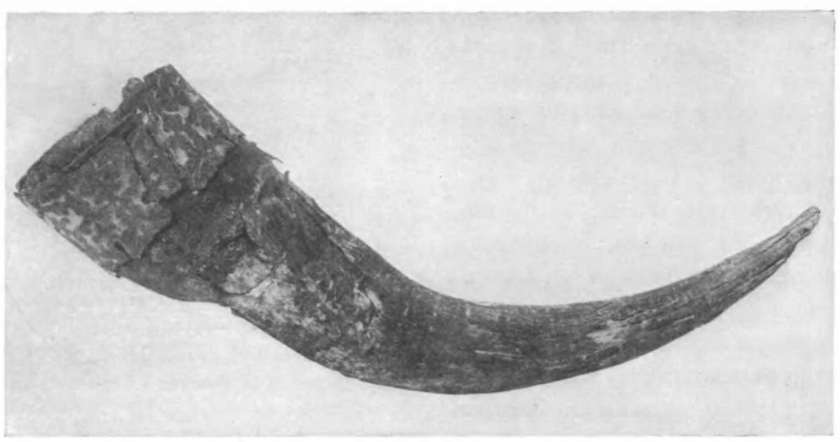
Vegetative designs were not the only motif in decorative art of the 9th-10th centuries. We also frequently encounter complex braided beasts, snakes, people, animal paws, and human hands. Cast from bronze or silver, always from a wax model and worked with a sharp chisel, these items (famous primarily from Gnezdovo, near Smolensk) associate Russian casting arts with the artwork of the northern European peoples. The sources of this “animal style” cannot be reduced to a borrowing from the Varangians, who were merely a few detachments of mercenaries from Scandinavia. The Varangians did not give the Rus’ their language, their runic writing system, or any other elements of their especially high culture; quite the opposite, they gave up all their national traits in Rus’ and became Russified.
Horses, birds, snakes, and ruling above all of this animal world the figure (or at least the head) of man – this kind of composition was known in the Dnieper glades at least 200 years before the appearance of the Varangians in the region (see the earlier chapter, “Art of the Ancient Slavs”). This style was particularly apparent in carvings on bone. Knotwork designs and bizarrely curved bones of beasts are quite often seen on bone plates from quivers, sword hilts, and cases for folding combs. In all likelihood, this style was also widely used for wood carving; in any case, vestiges are easily traceable to Russian folk wood carving in the 17th-19th centuries. We also find it in brass castings among burial mound antiquities. This style was intrinsic not only in the North, but also in the South. For example, an amulet with two interwoven dragons was found in a Belogorsk burial mound group in the Kursk region. Well-carved bone is also found in burial mounds from the 10th century alongside log huts to the south of Chernigov.
The harmonic coexistence of knotwork-animal ornament and Eastern motifs can be seen on the second aurochs horn from the Black Grave (see images below). The silver cover is framed with typically Eastern plaques with floral designs, worked in niello. The central part of the cover consists of a frieze of beasts, birds, animals, and people. Here we also see a rooster, a wolf, an eagle, and some incomprehensible beasts. Their bodies are intertwined and they are biting one another, and their tails have merged into a single ornamental palmetto. All of the personages in the frieze are entangled in a knotwork of ribbons, uniting these individual links into a single compositional whole. It is possible to find close analogies to just about every figure depicted on the horn amongst Russian burial mound antiquities from the 9th-10th centuries. All of these images, each individually customary to the Russian eye, were skillfully arranged by a Chernigov artisan into a single artistic whole. The chaser built his work according to certain compositional principles: the face of the vessel depicts a a scene of two men hunting a bird (see more below); on either side of this central subject stretch out woven tree branches, inhabited by a host of animals and beast-like spirits. On the rear of the horn, the two rows of beasts come together, and the tails of the last two dragons fuse into a palmetto, serving as a dividing mark for the entire composition. Having by chance survived the flames of the funerary pyre, this aurochs horn serves, as it were, as an artistic epigraph to Russian art of the following age. The embryos of many ornamental motifs on silver, on the parchment of manuscripts, and on the white stone of urban cathedrals can be found here on the cladding of this significant Chernigov horn. This horn stands on the brink between two epochs, between pagan and Christian Rus’. It closed out one epoch, and began another, just as after the Christening of Rus’, old pagan motifs continued to live.

Aurochs horn, clad in silver with depictions of animals and hunt scenes. From the Black Grave burial mound in Chernigov. 10th century. State Historical Museum.
From the 11th century, the time of Yaroslav the Wise’s rule, very few items have survived. It is possible to believe that among the later troves buried during Batu’s invasion, there are individual items created in the 11th century. One reference point we can use is handwritten ornament, the close connection of which, as we saw above, can be seen with other kinds of applied art. The decoration of the Ostromir Gospel (1057) and Svyatoslav Izbornik (1073) clearly imitates enamelwork. This allows us to look in treasure troves for items, buried among expensive gold jewelry, which are similar in style to these manuscripts. We can look, for example, at kolt chains in the form of a stylized tree with three branches. The variegated colors, massive stems, and characteristic curves make this enamel similar to the initials from the manuscripts. Even more similarity with the Ostromir Gospel can be seen in the enamel patterns of the diadem from Sakhnovka. The bizarre curves of the multicolored branches with many offshoots and a complex inner design, as well as the style of the gryphons, are extremely similar to the “enameled” capitals from the manuscript. Both the diadem and the Ostromir Gospel can be assigned to a single stylistic group. This style dates to the second half of the 11th – early 12th centuries.
A somewhat later monument of this direction, the Mstislav Gospel (around 1117) contains many decorative elements in common with kolty and golden ryasny.[43]jeb: The chains used to suspend kolty from a woman’s headgear, typically at shoulder height. Among these is the pattern of leaves with wavy whitework inside. We find this on items from Sakhnovka, where the diadem above was found.[44]Kondakov, Russkie klady. Vol. I; Khanenko, op. cit., plate XXXI, illus. 1096. In all cases, items with this design accompany kolty with sirens, rather than Christian images which were in widespread use by the mid-12th century. Few items have come to us from the late 11th century which can be more or less precisely dated. One of these was a mold for chasing silver kolty. The obverse of the mold is inscribed with the princely mark of Vsevolod Yaroslavich, who died in 1093 (see image above). This instrument of a courtly artisan can be dated to the second half of the 11th century.[45]Rybakov, B. “Znaki sobstvennosti v knjazheskom khozjajstve Kievskoj Rusi.” Sovetskaja arkheologija. 1940 (6), p. 254, illus. 82-85. The image of a beast with a flower in its mouth is carried out without any specific details. There is no knotwork design, just as there is none on other items from the 11th century. Kolty with very similar designs have been found near Chernigov. In the Church of the Tithes, they found the sarcophagus of Prince Rostislav Mstislavich, who died at the same time as Vsevolod (1093). It contained a silver cover for a sword sheath and belt set. On the belt tip, there was a vegetative design with rounded and smooth lines. The sheath had a depiction of a very generalized figure of a bird and the same rounded plant designs. Below, there was a woven ornamental design.[46]Karger, M. “Knjazheskoe pogrebenie XI v. v Desjatinnoj tserkvi.” Kratkie soobschenija IIMK. 1940 (5 (jeb: sic)), illus. 5.[47]jeb: Note, this attrbution contains a typo; the article in question was actually in issue 4.
In the 12th century, knotwork took a predominant position in Russian decorative art. Carved capitals (Chernigov) and knotwork designs on white stone (Vladimir) were common in architectural décor. Knotwork made up from four bands were strikingly identical in carved stone as well as in silver jewelry (for example, a late 12th century bracelet from the 1906 Tver’ hoard, a bracelet from the Rakovskaya manor in Kiev, the arches from Vschizh, and other items). These bands of knotwork surround beasts on kolty and in manuscripts. The wings of birds and beasts transform into a large net of lace, and their legs weave together into bands of knotwork.
The turns of the bands come in two manners. In the center of the work they are rounded, and the joining of several bands creates a figure similar to a circle. On the ends, the bands bend into acute angles. Alongside the knotwork, a smooth pattern of vegetative fronds continues to be seen. These fronds are few in number, but are large and primarily curl into the shape of the Latin letter “S”.
Tied to this more complex form of image and the strengthening of the knotwork motif, artisans abandoned the use of blackened backgrounds and turned around the middle of the 12th century to the use of niello for contours and outlines. The late 12th and early 13th centuries were characterized by the strong influence of filigree patterns made up from curls and spirals on jewelry, illumination, and fresco decoration. On clothing, on the haloes of saints, and on the bodies of beasts, spiral patterns appear more and more frequently, looking similar to the wire curls of filigree. The folds of clothing even follow this general style and twist into spiral curls.
Toward the end of the pre-Mongol period, the use of rounded vegetative patterns with leaves and lilies (kriny) became stronger (as if to counterbalance the fractional patterns of spirals). Flourishing crosses are quite common in this period, framed by these stems and leaves. This style was fully developed in the reliefs of the St. George Cathedral in Yur’ev-Pol’skiy (1234).
The compositional construction of Russian ornament in the 11th-13th centuries was always subordinated to the relatively small space of 1-3 squares. Very rarely, the ornament consisted of long, uniform stripes or ribbons. The earlier Russian artisans always broke up the decorative area into several distinct sections; each of these would then have its own independent pattern. These sections were sometimes clearly delimited by some kind of separating lines; sometimes, the artisan, having placed the design inside a circle, square or triangle, then deleted these geometric borders.
As an example of compositional arrangement of ornament, let us look at the wide silver bracelets frequently found in 13th century Russian troves. These bracelets always consist of two valves joined with a hinge. Each valve is typically divided horizontally into two unequal parts, with the upper part around 2/3 of the height, and the bottom 1/3. In addition, the plane of the valve is broken up by arches into 3-4 sections. The upper layer with the arcades was intended to be filled with birds, fantastic animals, and people. In the lower layer, the artisan placed knotwork and vegetative designs (see image above).[48]Guschin, op. cit., plate VIII, illus. 13. Once closed, the bracelet resembled a miniature tower with an ornamented base and an arcade running above the base all the way around the bracelet. The arches (in the 12th century these were round, in the 13th they were pointed) rest upon patterned columns with decorated capitals; the space between the arches is filled with flowers or with roughly human masks, and the golden birds in the arches complete the resemblance to the architectural décor of this period.
All types of decorative art were tightly interrelated: enamelwork to manuscript initials, initials to niello designs on silver, etc., and all this together came in contact with the bizarre fantasy of the artisans who created white stone carvings.
Items which were created by the hands of Russian goldsmiths were admired not only for their graceful execution, subtlety of technique and beautiful lines of decoration, but also for their bright colors and their combination of various colors. In medieval Russian clothing, the contrast between flamboyantly colored and white linen fabrics was echoed by multicolored jewelry. The silvery surfaces of kolty and bracelets was decorated by the contrasting black color of niello. Golden diadems, kolty and torcs were colored with enamel. The colors of enamel were dominated by dark and light blue tones, with green and flesh-colored tones lying alongside them, surrounded by red outlines. Details of the design were also accented with red enamel. As opposed to the Byzantines, Russian artisans loved to use white enamel, which completed the enameller’s rich palette.
Polychromatic enamel on gold or bronze was not the only means of pleasing the eye with an abundance and diversity of color combinations. We also constantly encounter colored gems and pearls in jewelry. Seed pearls framed golden kolty, and pearled designs bordered rich, silken clothing, continuing that noble combination of gold and white which was also seen in gilt silver items, and on white stone topped with gold filigree heads. On the golden jewelry from kokoshniki (the Kamenobrodsky trove), we see fine golden shells with pearls. It has now been proven that all of these pearls, which were widely used across Kievan Rus’, were of local, Russian production.[49]The issue of the history of Russian pearls and their role in decorative art was clarified by the dedicated research of L.I. Jakunina (PhD thesis defended in 1945 at Moscow State University. Manuscript). Along with pearls, precious stones and colored glass were also widely used. Glass bracelets with light blue, green, and black colors interwoven with smooth or relief goldwork were a favorite item of jewelry for urban women. In Kiev, they even wore glass seal rings. The color combinations in beads were exquisite. Alongside red carnelian and crystal, they wore beads made from paste with multicolored mosaic patterns.
On items of gold, artisans placed gems inside thin bezels, framed with pearls. Light-violet amethysts, dark blue sapphires, jasper, chalcedony, white sapphires, red garnets, and green emeralds were strewn over kokoshniki, kolty, and torcs, rivaling the colors of their enamel. Sometimes, the artisan would achieve an amazing color effect: the stone was placed not in a solid frame, but in an openwork one, raised above the surface of the golden plate on miniature golden arches (Staraya Ryazan’). As a result, the stone appeared to be suspended over the gold, and rays of light creeping through the archways under the stone and reflecting from the mirrored surface would illuminate a transparent gem from within.[50]Kondakov, Russkie klady, p. 87.
Many gemstones had various symbolic meanings in medieval Rus’. Especially revered were emeralds, or as they were called in medieval Russian, izmaragd. It was thought to be a stone of wisdom. Collections of sayings were called Izmaragdy, and sometimes princely daughters were named at birth after a stone. For example, the daughter of Rostislav Ryurikovich was given the Christian name Efrosin’ja, but her worldly name was Izmaragd, “as a precious stone might be called.”[51]Hypatian Chronicle, under year 6707 (1199). The color spectrum of medieval Russian artisans was bright and rich, complemented various technical methods, and played an important role in the formation of ornamental motifs.
The Subjects of Applied Art
Images on medieval Russian jewelry open before us the bright and colorful world of those artistic images and ideas which were lived by the artisans who created these significant works of decorative art.
In literature, in the white stone relief carvings of urban cathedrals, in the diadems of the queens, and in the patterned fabrics of heavy cloaks — everywhere, we see whimsical fantasy fueled by folk stories and pagan myth. Centaurs, leopards, sirens with young girls’ faces, basilisks, phoenixes, the holy “Tree of Life,” doves, eagles, gryphons — all of these were depicted on everyday items of the XI-XIII centuries on equal footing with the images of Sts. Boris and Gleb. The Christian becomes interwoven with the Pagan. As in the Lay of Igor’s Campaign where the Blessed Virgin and Deva Obida[52]jeb: An old Slavic goddess, the Black Swan Maiden, a harbinger of disaster. are mentioned side by side, so too in decorative art, the stern Deësis row and illustrations of the legend about the ascension of Alexander the Great to heaven are seen on one and the same item.
An overview of subjects should start with the important aurochs horn from the Black Mound in Chernigov (see image above). Among the wolves, birds and fantastic beasts artfully worked by the mid-10th century artisan, there is a main subject which stood in the center of the artist’s attention: two hunters with bows shooting at a bird. Examining the figures of these archers, we note the following details: in front is a woman holding a quiver and bow, with a long ponytail and without any sort of headgear. She is dressed in a yubka with a checkered pattern (a poneva?) and a shirt with decorated sleeves. Behind her is a bearded man with long hair, wearing a kaftan or chainmail (?), holding a bow. It appears he has just fired an arrow. Both figures are striving toward the bird, but arrows have fallen not only near the bird, but even behind the man. One arrow flies aloft, another is broken in half, and a third points directly to the back of the man’s head.
We obviously have before us some kind of fabulous story – bewitched arrows which turn back against the archer, and the entire composition is reminiscent of a story: a young maiden, a man with a bow, and a predatory bird (eagle?). However, it is not among stories, but rather among the Russian byliny, specifically those of the Chernigov cycle, where we find a clue to this scene. The bylina about Ivan Godinovich tells of how a young Kievan bogatyr’ set off toward Chernigov to find his bride, Mar’ya Dmitrievna. On the way, Ivan’s cohort scattered throughout the woods, following animal tracks. In Chernigov, it is revealed that Mar’ya is betrothed to Tsar’ Kaschey the Immortal, but Ivan Godinovich takes her away anyway. On the road, Kaschej falls upon them and, having cunningly defeated Ivan, ties him to an oak tree. All of a sudden, a bird arrives, the “black lie,” and in a human voice foretells a bad fate for Kaschej. From this moment forward, the Chernigov bylina and the stamped image on the Chernigov horn are completely identical. Kaschej asks Mar’ya to bring his bow and arrows (on the aurochs horn, the maiden holds a bow and quiver; the man has no quiver), and he shoots at the prophetic bird. Ivan bewitches the arrows, and they fly into Kaschej’s head. On the stamped image, one of the three arrows is directed toward the head of the man, Kaschej. The presence of this bylina subject on this ritual vessel from the 10th century is of great interest, and definitively belies the fabrications of several German scholars about the supposedly Norman origin of this aurochs horn.
In the given example, the subject was denoted clearly and precisely. In other situations, it’s not always possible to immediately guess the idea presented, as it is hidden or extremely stylized, or symbolic meaning which may have been immediately understood by contemporaries, but which are mysterious to us.
In medieval applied art, magical elements prevailed over the purely aesthetic. We can judge this by the pagan gryphons, holy trees, birds which bring happiness, amulets with symbols of the sun or the moon, and other benevolent symbols which in 12th century urban art become replaced with images of the new gods – the Christian saints. On monista and kolty, gryphons were replaced by Sts. Boris and Gleb, Peter and Paul. This means that the previous images also had sacred, protective meaning, or such an exchange would not have been possible.
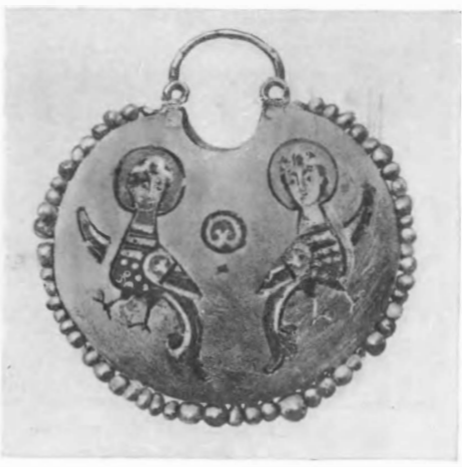
The ornament of medieval Russian clothing and jewelry continued, according to tradition, to reflect a number of magical views. According to primitive ideas, it was possible to block evil spirits’ access to man through magical symbols on clothing. As a result, incantatory patterns were located on all edges of clothing, that is, wherever the body became visible – at the collar, cuffs, and hem. The names for women’s headgear take us into the distant past of totemic ideology: soroka [jeb: “magpie”], kokoshnik (from kokosh, or rooster), roga [jeb: “horns”] – these are all remnants of ancient mascarades, known since the stone age. Based on these considerations, it is necessary to pay particular attention to the subjects of applied art. Images on diadems, kolty, and bracelets should be regarded not merely as a conglomeration of various images, but as cryptic signs or ideograms, to which knowledge of pagan thinking serves as a key. It is not by chance, naturally, that in the 12th century, there was an exchange of prior images to the new, and that on headgear designs, alongside birds and gryphons we begin to see Christian saints, the new protectors against evil. In the ethnographic record, the magical meaning of headgear was preserved even longer. For example, on Novgorod chelki, analogous to the Kievan crowns from the 12th century (also composed of seven plaques), there was a depiction of the great goddess with raised hands.
One of the most widespread images was that of birds – eagles with raised wings, peacocks and peafowl, pheasants, falcons, doves, ducks, and a plethora of other birds, from which stylization had already removed many realistic traits. Images of birds (in medieval Russian, p”tky) were found in architectural decoration. The methods for depicting birds are almost always identical, independent of the material: the neck is interrupted by a necklace, the chest is covered by a schematic depiction of feathers or colored circles. Sometimes, instead of feathers, spiral curls are shown. The wings are almost always broken by a transverse line into two parts which are decorated differently. Sometimes, it is as if a bird symbolizes the sun: from her outstretched wings, a radial pattern of rays emerges, for example on an enameled kolt found on Knyazha Gora near Kanev.[53]Khanenko, op. cit., plate XXVIII, illus. 1000. The obverse of this kolt depicts a duck, a traditional symbol of water. From the combination of these images, we see part of some symbolic phrase about the sun and water. In order to reveal the entire idea, we are lacking the depictions on the crown, which should have been able to fill in and complete the ring of symbolic images into a single whole. Examples of complete compositions, where the design on the crown was thematically tied to the images on its suspended jewelry, have been found in Kiev-region antiquities from the 11th-12th centuries.
Sometimes, birds symbolize unhappiness, death, or trouble. In the miniatures from the Radziwiłł Manuscript, the original of which dates back to the 12th century, birds several times accompany various sad events. In the depiction of the funeral of Oleg Svyatoslavich, who was crushed in the moat of Ovruch Fortress in 977, the miniature shows a bird atop a tree.[54]Fotomekhanicheskoe vosproizvedenie Radzivillovskoj letopisi. Moscow, 1902, folio 42. A second image of birds accompanying burials is seen on folio 114 reverse. But, the bird as a symbol of unhappiness stands out particularly clearly in the description of Vladimir’s famous siege of Roden’ at the mouth of the Ros’ River. The chronicler writes about this siege: “there is a saying to this very day: trouble like in Roden’.” On the miniature, we see a tower, and upon it a thin and somewhat unrealistic ghost of hunger in the form of a woman; next to her, on a tree, is a predatory bird with its wings widespread.[55]Radzivillovskaya letopis’, folio 43 ob. It is interesting that the described symbolism is found only in the oldest parts of the manuscript.
The Lay of Igor’s Campaign also contains exactly the same sort of use of predatory birds: they are agents of hostile forces, breathing the spirits of trouble and unhappiness. When Igor’ ignores the solar signs and heads out onto steppe, “already his troubles awoke the birds in the oaks….” This phrase should be interpreted thus: “in the oaks, a bird was already preparing his [Igor’s] intended misfortunes.” Here, the birds are an image similar to Solovej the Robber on his nine oaks.[56]In the conventional translation by S. Shambinago an V. Rzhigi, this text is understood thus: “Already, his misfortune drove the birds through the oaks.” (Slovo o polku Igoreve. Moscow-Leningrad, 1934, p. 78.) It seems that given the scribe’s use of the Pskov dialect, we should read ptits’ as ptich’, and then the translation is clear. In an academic publication of the Slovo o polku Igoreve, in the series Literary Monuments (USSR Academy of Sciences publishing house, 1950, p. 9), it gives the following translation: “already, the birds were predicting trouble for him,” which the author of this chapter does not fully agree with. Div[57]jeb: Div appears to be some kind of deity or spirit in the Slovo, who “cries out to the idol in Tmutorokhan” and other eastern lands warning them that Igor’s army is on its way., who “shrieks from the treetop,” is also most likely associated with the image of a bird. We again encounter the bird as a symbol of woe in the image of the maiden Obida.[58]jeb: obida literally means “resentment” When Igor’ defeats the Polovtsy, the singer happily exclaims that Oleg’s brave tribe was not predestined for misfortune: “It was not born for the affront by falcon, or gyrfalcon, or you, black raven….” Obida is placed at the head of a hostile flock of predatory birds. As soon as “Igor’s banners fell,” then “Obida came… she stepped like a maiden… she splashed her swan’s wings… splashing, she has awoken woeful times.” This literary image of the maiden Obida, spalshing her wings and annihilating good times, is extraordinarily similar to the symbols in the Radziwiłł Chronicle: the maiden as the personification of woe (Obida) and the bird with outstretched wings atop a tree.
In applied art from the 10th-12th centuries, we often find depictions of predatory birds (eagles, or falcons with crests upon their heads) with open wings.[59]For example, amjlets from one of Radimichi mound near Starodub (collection of the State Historical Museum in Moscow), in the Kamennobrodsky treasure. See: Otchet Arkheologicheskoj komissii za 1903 god, plate XII. Birds laid out in granulation on beads from the treasure from the town of Devitsa. (Khanenko, op. cit., plate XXXII, illus. 1098). Birds with open winds also occur on later rjasny, for example on those of Tsaritsa Anastasija Romanovna. These rjasny replaced earlier kolt chains.
On silver lamella with colored enamel prepared in the 13th century and then used on the sakkos for Metropolitan Aleksey, there is an interesting image which allows us to come closer to understanding one of the mythological images of medieval Rus’. The plaque bears a bird with a woman’s head, in a quadrifoliate shape. In contrast to typical images of sirens, in which the wings are always semi-omitted, here the bird-maiden has both wings stretched out wide, reminiscent of the miniature showing the misfortune in Roden’.[60]Tolstoj, I. and Kondakov, N. Russkie drevnosti v pamjatnikakh iskustva. 1899 (V), p. 93. The silver plaques (drobnitsy) sewn to the vestments of Metropolitan Aleksej (14th century) are completely analogous to Rjazan’ and Kiev’ antiquities from the 12th-13th centuries. Could this be the important maiden Obida, sad and angry deity of misfortune?
This association of birds with death can also be traced in later ethnographic material. A carved bone snuffbox from the 17th century depicts a bird sitting on a leafless tree, with the following inscription: “My love lives on after death.”[61]Sviontkovskaja-Voronova, L. Reznaja kost’. Moscow, 1923, plate 19. This subject brings to mind the lyrical lines from Vladimir Monomakh’s letter to Oleg Svyatoslavich, the wrongdoer who had killed his son. Vladimir asks the widow of his deceased son to come out of bondage: “Let her come to me at my first word, and when we have finished our tears, we shall stay in that place, and sit like a turtle dove upon a bare tree in remorse.”[62]Laurentian Chronicle, under the year 6604 (1096). Cursive is ours – B.R. The bird in a bear tree is an enduring symbol of woe and posthumous sorrow.[63]In small-form sculpture from the 12th-13th centuries, birds are depicted over “the Lord’s grave”.
Presumably we can outline the same difference in the iconography of “sorrow birds.” If their wings are folded calmly, the bird represents only sadness or woe. If the bird is excited or in an angry rage and flutters its wings, we can assume it to be a malicious force, hostile to man, or umbrage. The former pities man in his final unhappiness, death. The latter brings unhappiness itself, “herding woe.” This image of the “pitying-bird” is encountered in the Lay of Igor’s Campaign: “Igor’s brave force shall not rise again. Behind them, Karna shrieked, and Zhelya leapt across the Russian lands….” Scholars have long since determined the original meaning of Zhelya. They determined this word is derived from the verb zhaleti – to regret. From this we get Zhelya, one who pities the dead.[64]Slovo o polku Igoreve. Moscow-Leningrad, 1950, p. 20.
On that note, we should look at an additional area of decorative art which so far has not entered our view: the brass and silver tips for sword scabbards. Decoration of medieval weaponry reflected magical symbolism to an even greater degree than did jewelry on headgear. On these scabbard tips which covered the deadly sting of their swords, we most frequently find that symbol of death and woe, the bird with folded wings. This type of bird is found, for example, on the scabbard of Rostislav Mstislavich, who died in 1093.[65]Karger, Knjazheskoe pogrebenie…, p. 14. On a bronze scabbard tip found in the Kiev region, the artisan cast a bird in a pose of woe, sitting on a stylized tree (see image above).[66]Khanenko, op. cit., plate XIV, illus. 206. It is possible that this is exactly the visual image which should associated with Zhelya, the spirit who leapt across Rus’ following the death of Igor’s troops.
Birds were also the personification of sun and light. From Russian folk stories, we are well familiar with the image of the firebird, one feather from which was sufficient to light up an entire room at night. And, thus, we find symbols of the sun and birds on lighting fixtures. A wooden painted candle holder from the Arkhangelsk region was decorated with a circle and cross, and with a rooster with upraised wings; below on the same light is a circle with rays of light, and a bird within. On another light, inside a circle with rays, there is a bird-siren with a maiden’s face and wearing a crown. Sometimes, a bird is surrounded by diamond shapes, wheels, or jagged wheels. Brass candlesticks from the 16th-17th centuries teem with depictions of birds. Later, these birds, the symbol of the sun and light, would be replaced by the two-headed eagle.
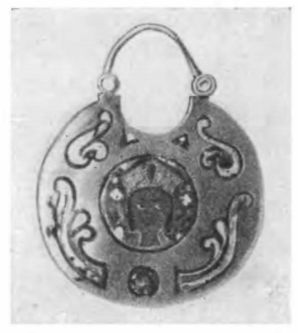
In medieval Rus’, luxuriously decorated chandeliers, or khorosy, suspended on bronze chains, were decorated with both sun symbols and birds (see image above). Each link of the chain contained a slotted disc with a cross in the center – a common symbol of the sun and fire. At the base of each candle there was always a bronze firebird, the guardian of light and an entity tied to the sky and son, and therefore also related to internal light from candles.[67]The image of a khoros came from Khanenko, op. cit., plate VII. In both folklore and decorative art, the firebird was associated with neither fire or the hearth, but instead only with light.
We analyzed the multifaceted image of birds in Russian decorative art in the 10th-13th centuries and determined through the assistance of folklore that depending on the bird’s location and the way it is depicted, the idea invested into the image by the medieval Kievans would also change. But our overview of the world of birds is still not complete. Master jewelers left behind a plethora of complex images in which birds are indispensable. Frequently we see paired combinations of birds: two birds sitting opposite one another. Sometimes, a stylized tree is placed between the birds. Is this a simply ornamental motif, or another page from the book of pagan wisdom waiting to be read? In the mindset of medieval Russian man, birds were free creatures played an important role as the only inhabitants of the visible celestial sphere, and possibly as liaisons between between mankind and the heavenly deities.[68]Having observed birds in flight, Vladimir Monomakh tried to penetrate the secrets of nature and to explain them: “We wonder likewise that the birds of the air come from far climes and to our own land first of all. Yet they remain not in one region, for both weak and strong, by divine commandment, fly over the whole earth, to populate the forests and fields. All these blessings God has bestowed upon us for the delight, sustenance, and pleasure of mankind.” Laurentian manuscript under year 6604 (1096).[69]jeb: Translation in footnote The Russian Primary Chronicle: Laurentian Text. Trans. Samuel Hazzard Cross and Olgerd P. Sherbowitz-Wetzor. Cambridge, Mass., 1953, p. 209. The flight of birds was loved, songs about birds worshipped God, and man wondered at the cry of sacred birds. Fortune telling based on the cries of birds was so widespread that it was said that people who believed in “neither sleep, nor sneeze, or the cries of birds”[70]jeb: A Russian folk saying, meaning that someone does not believe in superstitions. were quite rare.

Special books existed for fortune-telling: “The Sorcerer, Practicing Magic with Birds and Beasts,” “Voronograi,”[71]jeb: from voron, crow, a book on fortune telling from ravens’ cries. and “Kuroklik.”[72]jeb: a book on fortune telling based on the crowing of roosters. Fortune telling itself was done with the indispensible use of two birds. In a Christian sermon against paganism, the Sermon by St. Kiril on Evil Spirits, known in Rus’ starting in 1073, we read: “We believe in roosters, and woodpeckers, and crows, and tits. When we want to go somewhere, before we leave, we stand listening for left or right….”[73]Gal’kovskij, N. “Bor’ba khristianstva s ostatkami jazychestva v drevnej Rusi.” Zapiski Moskovskogo arkheologicheskogo instituta. 1913 (18), p. 68 (cursive is ours – B.R.). The Sermon by St. Cyril on Evil Spirits” was first mentioned in the Svyatoslav Izbornik, 1073. A fortune-teller would look at two birds and wait to see which would “pipe up” (sing, coo) first, the one on the right or left, having first selected one of them. And thus, on the temple rings from the Belevsky hoard, we see two birds sitting across from one another. These paired birds were quite frequently placed on kolty, bracelets, and other items.
Quite often, images of birds are anthropomorphized. A sacred bird transforms into a woman. We know well from stories about transformations by the Swan-Princess. Obida also appears in two forms: in one as a bird with swan’s wings, and secondly as a maden. A great number of items of jewelry include such bird-women. They all have a bird’s body, legs, wings, and tail, but their head is that of a young woman. Upon her head is either a hat, kokoshnik, or even a crown. Almost always, the head is surrounded by a halo. On gold kolty from 11th-12th century Kiev, these bird-sirens[74]Kondakov, Russkie klady, tables II-III; Khanenko, op. cit., plate XXXI, illus. 1006. were depicted quite colorfully. Their maidens’ faces were worked in enamel with great elegance and skill (see image above). The artist has really managed to achieve an attractive image of a sweet-voiced bird-maiden. Here we quite clearly feel an ancient and lasting motif coming from the art of antiquity.
In medieval Russian spiritual verse, the image of the bird-maiden is fully revealed: “The bird-maiden is found at sea, and sings sweetly, making the sailors sleepy. While they sleep, their ship is dashed upon rocks, and they become food for the sirens.[75]Buslaev, F. Russkie dukhovnye stikhi. Moscow, 1861, p. 33. It seems that from the depths of folk memory, an image has emerged of the many-experienced Odysseus, who heard the songs of the sirens while tied to the mast of his ship. The sirens on kolty are depicted in pairs, positioned back to back, but with their heads turned facing the viewer. Sirens on silver bracelets look at one another. It is as if their pose, with heads thrown back and faces pointing upward, emphasizes their singing nature: the are clearly singing.[76]Kondakov, Russkie klady, p. 85. Bracelet from Kiev. In Christian mythology, the siren is considered to be a bird of paradise. A second bird of paradise was the Alkonost,[77]jeb: from Russian folk poetry, a fabulous bird of happiness, also with a human face. which differs by its crown and the flower in its hand. In Russian decorative art, the Alkonost is encountered rarely: in one case among the capitals from the Yuriev Gospel, and then on a 13th-century pair of kolty from the village of Zalestsy (Volyn’). Both the siren and the Alkonost are understood as being related to birds. One of the most common variants of a pair of birds and sirens was to have them positioned on either side of a tree. This motif permeates all decorative art. We find it on white stone carvings on cathedrals, and in manuscripts, and on kolty, bracelets, and on sewn-on plaques on oplech’ya. It has also been found on battle axes and other items. It is quite tenacious; it is also found in abundance in ethnographic embroidery, carvings and murals.
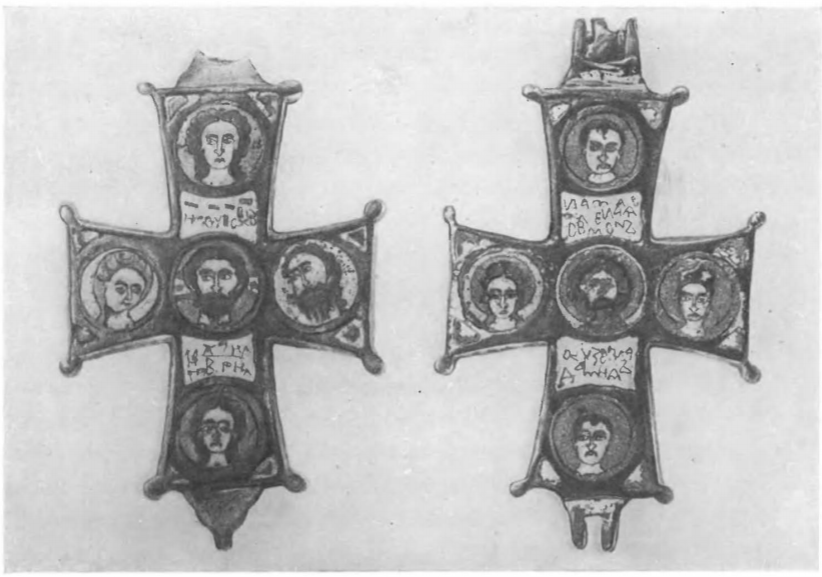
The tree of life, used as the center of composition, plays an extremely important role in the art and folklore of various peoples. The tree often represents a mother-goddess, because it represents the fertility of the earth and its life force. The outer appearance of this tree of life in Russian applied art from the 10th-13th centuries can be broken down into several types. First of all, it should be said that it is never portrayed realistically; it is just as symbolic and fairytale-like as the rest of the images and representations carried out by Russian artisans on gold, silver, fabric and stone. The simplest form of the tree in pagan art was a rod topped by a diamond-shape, seen in the art of the ancient Slavs. It continued to be used in the 10th-13th centuries in the countryside (combs, temple rings). In urban jewelry, the tree was presented a bit more luxuriously, but gradually this appearance became anew more and more like this simplest form.
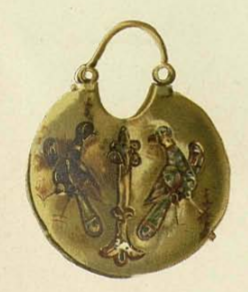
In 8th-9th century Rus’, we often encounter the image of the tree with two roots and five massive branches. The branches end in three semicircular leaves, giving each branch the appearance of a cross. This five-branched tree is seen on a plaque from the Zaraysky trove, and on a 12th-century bratina[78]jeb: a medieval Russian vessel, spherical in shape, used for drinking alcohol at funerals and feasts. (both items were of Eastern manufacture). In Rus’, this tree became simplified over time. A golden chain used to hang kolty from a kokoshnik can be dated to the 11th century. On its rectangular links, these trees are worked in colored enamel, quite similarly to the aforementioned Eastern items, but already with only three branches. The tree has three roots, depicted quite clearly and distinctly. Despite the changes in stylization, this detail was always preserved, as if to emphasize the association of the “tree of life” with the life juices of the earth. On a 12th century pair of gold kolty from a royal workshop in Old Kiev (a mold and several kolty made from this mold have survived), the image of the tree has been simplified.[79]Kondakov, Russkie klady, table XV, illus. 18. This trove was found on the Leskov manor in Kiev. The side branches have disappeared, and only one main stem remains, topped with curls. The overall silhouette of the tree’s crown is somewhat diamond-shaped. Even more simplified is a tree on the plaques of Metropolitan Aleksey’s sakkos: it has only three leaves, layed out in the shape of a cross.[80]It is possible that the form of the “tree of life” with branches tipped by three protrusions influenced the development of the Russian form of pectoral cross. As opposed to the Byzantine enkolpion’s geometrical forms, Russian crosses always have similar three-leaf ends. The stylized tree with one trunk and two branches protruding from it in a cross-shaped pattern is not far removed from a cross/enkolpion. Both the tree and the cross were equally considered to be life-giving.
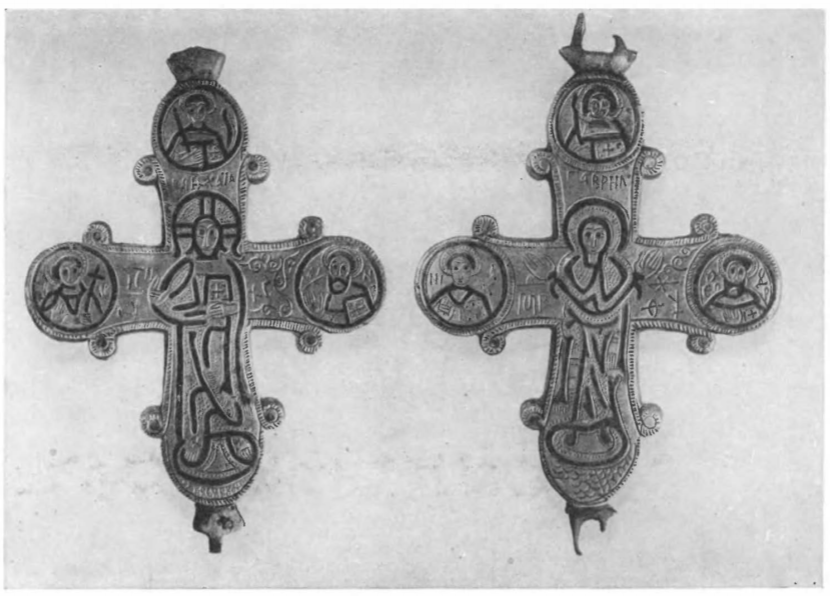
If the medieval Russian artist could give only one hint of the idea of the life-giving tree, he used its most simplified form, depicting only its top with three semicircles. Sometimes, these three leaves would transform into a lily. These cross-shaped symbols of trees are often countered on the mantles of the Russian saints depicted on kolty. Christian symbols replaced the ancient pagan ones, but the Russian people of the 12th century, still not fully aloof from “demonic and Hellenic wisdom,” considered it still necessary to preserve ancient talismans against evil. For this reason, on saints’ clothes, we still see the symbols of the tree, depicted according to the typical principles of partial magic – one part instead of the whole. Sometimes trees were placed next to saints (Sts. Boris and Gleb, from the 1822 trove in Staraya Ryazan’).
In this way, decorative art reflected that dual faith against which preachers railed in the 11th-13th centuries.
It is worth noting that, in addition to the type of sacred tree described above, there existed another form, most commonly used in the 12th-13th centuries. A tree with two roots stands upon a small rise; its branches diverge to the sides forming a heart-shaped pattern, then come back together. Two curls and fruit hang downward (into the heart-shaped void). From each of the two main branches, a branch with curls and fruit hangs nearly to the ground. This form particularly emphasizes the fruit-giving force of the tree, starkly shown by the branches bending under the weight of the ripe fruit. We find this type of tree on silver bracelets, surrounded by sirens; we also see it on gold kolt chains accompanied by two birds facing in different directions. It can also be found on a diadem with the Deësis row in the capacity of a dual-faith doubling of the protective force of the Christian saints. The filigree decoration on the large kolt from Staraya Ryazan’ is entirely composed of this heart-shaped design of the fruit-bearing tree. The final threshold of this image’s stylization can be seen as heart-shaped designs on the mantles of Christian saints displayed on kolty. Both methods of depicting the sacred tree – with leaves, and with fruit – were equally stylized and were dressed in the clothes of the new gods.
In the 12th century, the epoch when braided ornament was becoming important, the tree of life was sometimes depicted as a braided knotwork, but the main elements of the tree (roots, fruit, etc.) remained unchanged.
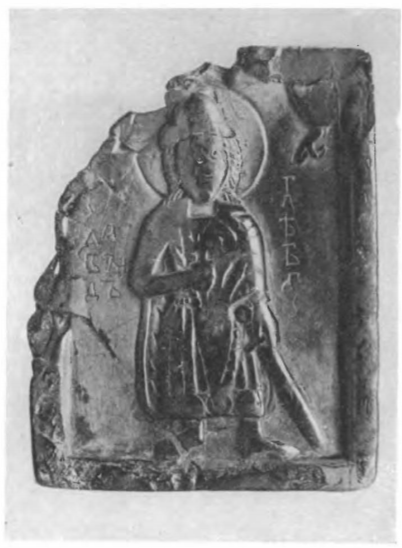
Knowing of the widespread nature of the cult of trees and “groves” among the Slavs, it is impossible to consider this subject to be an ornamental motif imported from the East. It was organically associated with local pagan beliefs. Likewise, the motif of paired birds on either side of the holy tree had a deep inner meaning for the Russian peoples of the 11th-13th centuries. It was not mechanically copied from Iranian or Byzantine fabrics, and served to illustrate a myth about the creation of the world. A Russian carol speaks of how the world was created by a pair of doves, sitting on a tree, which was the only tree in all the world to emerge from the world ocean.[81]F. Buslaeva. “Letopisi russkoj literatury i drevnosti.” Russkie narodnye pesni, sobrannye P.I. Jakushkinym. Vol. I, Issue II. 1859, p. 100. The ritual around carols was one of the most important in the annual cycle of pagan holidays.[82]Even in the 17th century in Moscow, holiday carols resulted in a special royal decree: “It is known to us that in Moscow, in the Kremlin, and in Kitaj[gorod] and in Bel[gorod] and in the cities of our land, many people sang carols in the streets and avenues.” Etnograficheskoe obozrenie. 1897 (1), p. 147. These carols expressed the same important aspects of the medieval world view, pointing at the same time to the commonality of the agricultural religious beliefs of the Slavs and other peoples of the Old World.
As we’ve shown, the holy tree with two birds on either side was known in both pagan worship of the new year cycle, and in decorative art of the 11th-13th centuries and following periods. It is curious to note that the most common location where depictions of this legend about the creation of the world was located was feminine headwear, with its fixation on archaic ritual subjects. Golden chains would hand below a kokoshnik, ending in golden kolty. A woman’s face would be surrounded on all sides, as if by a frame decorated with magical symbols: over the brow was the diadem, where aside from the presence of Christian saints, there were two ancient symbols of life – the depiction of women and holy trees. From the temples to the shoulders ran chains with birds and trees of life. On the kolty at the shoulders was the finished composition: the tree (rising from the ocean) and two birds, the creators of the world. Below, on the chest, the frame was closed by a hryvnia made of medallions with pagan or new symbols. A woman dressed in this way would have considered herself to be protected from any evil.
Parallel to the Russian origin myth, there was also an eastern, Volga-region variation. According to Mordovian legend, the world was created by a single bird (a duck). The duck swam in a boundless ocean and, diving down, retrieved a piece of earth from the bottom, from which the earthly firmament was created.
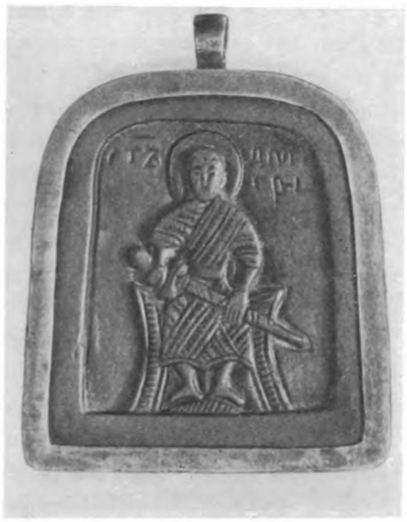
As such, on Bolgar gold kolty with three acorn-shaped beads, in the center of the ring there is placed a golden duck, worked in the finest filigree. The duck’s beak is half-open, and in it, the bird holds a round golden lump.[83]We also recall that on temple rings, which were used much the same as were kolty, we saw horses depicted, standing in front of a sacred symbol. cf.: Guschin, op. cit., table XXXIV. Once again, this detail from headgear is associated with a myth about the creation of the Earth. In the subjects of decorative art, we step by step, letter by letter, read the ideas of ancient thinking, revealing their ideas, which have been darkened by the patina of time.
Gradually, these motifs of the two birds and the holy tree lost their meaning and transformed into a beloved pattern. From the sphere of jewelry-making, they found their way to book decoration and became the basis of a majority of manuscript miniatures. However, until the 13th century, scribes avoided its use while (it seems) its pagan meaning had not yet faded.
In addition to birds, we also encounter other images from the animal world in Russian decorative art. Sometimes, lions or leopards are depicted with realistic faces, but significantly more frequently, the animals have lost their realistic features and are winged. All eastern literature, folk tales and Christian manuscripts were filled with descriptions of fantastic creatures. Medieval bestiaries are well known to us for their Romance and Gothic art. These images also existed in Rus’. Animals with an abundant tails and wings won themselves a solid place in Russian decorative art (see images above). In our time, it has been shown that the Iranian beast called a Senmurv (half-dog, half-bird) was considered in Rus’ to be a deity called a Simargl.[84]Trever, K. Senmurv-Paskudzh. Leningrad, 1937. It is possible to suggest that in Russia, this name was used to describe not only the canonical version of the beast which in Iran was called a Senmurv (there are no such Russian depictions), but in general any bird-animal of eastern origin. In that event, this category should include not only the winged leopard, but also gryphons with the head of a bird, and an animals wings and body. Images of both forms of bird-animal by Russian artisans differed little. Winged beasts were most frequently found on kolty, which leads us to consider them to be protective magical concepts.

On weapons, we find a subject not encountered on other items. On the axe of Andrey Bogolyubsky (see image), both sides are covered in gold and silver engravings. On one side is the tree of life and two birds (this symbol is sometimes replaced on axes by the Greek word ΖΩΝ / Zōn, meaning “life”); on the other side is a writhing serpent, pierced by a sword. Tales of snake-fighters were wide-spread everywhere. One of the eddas tells of Sigurd’s battle against the snake Fafnir, whom he pierced with a sword.[85]Sizov, V. “Drevnij toropik iz kollektsij Istoricheskogo muzeja.” Arkheologicheskie izvestija i zametki. 1897 (5-6), plate 1. This snake-fighter motif was also known in Bulgaria and in Rus’. We recall the legend of Peter and Fevroniya, where a winged serpent (a dragon) dies from a special “Greek sword”. There is no need to attribute this subject’s source to Scandinavia. Similar writing dragons were frequently depicted on sword scabbards. Every time the bearer inserted his sword into such a sheath, it was if he was sticking the point into the body of the dragon, personifying evil. This impression was strengthened by the fact that the dragon was depicted on both sides of the scabbard, and thus the sword really would “sink” into its body. The point of the sword was associated not only with the idea of the death cry, but also with the defeat of evil.
Our review of the subjects of Russian decorative art in the 10th-13th centuries has revealed the amazing wealth of images which inspired medieval artisans. Magical images of birds and beasts, pagan gods and new Christian saints, and folktale and ritual subjects attests to the deep thought that went into every item and image. In the decorative art of medieval Rus’, there was no simple, objectless decoration – everything was subject to certain traditional rules: on headgear there would be one subject, on bracelets another, and on weapons a third. Artistic fantasy scooped up images from an inexhaustible base of folk art.
Russian goldsmiths, who decorated their “precious items” with various “tricks and puzzles,” never stooped to blindly copying others’ images. Using images which developed from within, they wrapped them in new meaning, making them speak in the beautiful and poetic language of Russian folktales.
In addition to images of fantastic creatures and birds, medieval Russian artisans also readily turned to images of man.
The secular stream in Russian art is poorly known to us. Royal palaces were, in all likelihood, decorated with worldly paintings, slate bas-reliefs, and carvings. It is possible to draw an albeit incomplete impression about this from the frescoes in the staircase in St. Sophia’s Cathedral [in Kiev] leading to the royal choirs, and from Kievan relief carvings possibly originating from the Berestovsky “Red Court” of Vsevolod. Of more interest to us are individual examples of decorative art depicting people. On silver cuff bracelets decorated with various scenes including men and women, as well as the aurochs horn from the Black Grave, the people are depicted in profile: their prominent, sharply defined noses, the line of the mouth pointing downward, and their massive chins completing their faces. From these everyday details, it is worth noting that the men are beardless. The habit of drawing faces in profile forced the artisan to engrave his heroes with heads turned to the side above frontal-facing torsos. Having the faces turned toward one another, variations in the position of heads and bodies, dynamically placed legs, hands gesturing animatedly with clearly drawn fingers — all of these saturated depictions of people with liveliness and movement. Remarkable in this respect is the drawing on a casting mode made of rose slate (12th-13th century) made, in all likelihood, by a master artisan. It depicts a man in a conical hat, from which his long hair emerges. His chest is covered by his beard. His eye and nose are presented quite schematically, but despite this, the engraved design is quite lively and lush.[86]To the list of worldly subjects, we should also add the depictions on the pilaster on the capitals of St. George’s Cathedral in Yur’ev-Pol’skiy, which show youths in similar hats and earrings. Cf. Bobrinskij, A. Reznoj kamen’ v Rossii. St. Petersburg, 1916, plate 35.
One interesting group of depictions is seen on silver cuff bracelets, richly decorated with gilding and niello. We we encounter, for example, a reworked version of a widespread motif of the four elements: Earth and Water, in the form of a woman with a vessel and a running man pointing to the heavens, depicting Air (bracelet from the 1906 Tver hoard). The symbol for the fourth element, Fire, is not seen on Russian items.
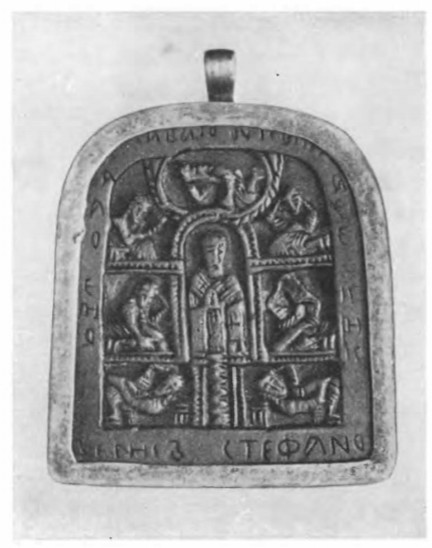
On two very similar bracelets of unknown origin (judging by the gilding, possibly Vladimir), a man playing a domra and a woman dancing with loosened sleeves are seen in separate arches. The dancing is reminiscent of another fairytale: the Frog-Princess, dancing at a feast and waving her sleeves, releasing a flock of swans. In separate arches, the musician and dancer are presented as resting and talking, presented by means of their gestures (see image above).
No less interesting is a bracelet from Kiev. Here, the central figure is a gusli-player in a long, embroidered outfit and a tall, bent cap, while on either side there are dancing girls with long, loosened sleeves, and warriors with swords and shields. It is possible that in Rus’, similar sword dances existed, reminding us of the dances of armed bacchantes in the service of Dionysus. Dances with loosened sleeves are also known from Russian folk life: in the Radziwiłł Manuscript, which was copied from a 12th century original, in scenes showing the games of the ancient Slavs, a woman is depicted, dancing with loosened sleeves. By covering the bracelet with images of skomorokhi, gusli-players, and dancing women, it is as if the artisan has taken under his wing the “demonic dances” that were persecuted by the church, creating secular decorative art which was entirely free from any ecclesiastical influence whatsoever. The artisan has drawn the figures with a characteristically flowing outline (sometimes doubled). He has depicted faces and clothing very briefly, but expressively. Here, as in other situations, human faces are shown in profile.
Rarely, everyday subjects are seen in enamelware. On one kolt, instead of the traditional birds or saints, the artist has depicted a beautiful young woman in a tall kokoshnik. Patterned ryasny with kolty on the end fall from her kokoshnik to her shoulders (see image above) The face is shown frontally, as are generally all faces in enamel (enamel is not associated with full profile images).[87]Kondakov, Russkie klady, plate XV. Hoard from the Leskov manor.
Naturally, human figures appear significantly more frequently in Christian subjects. Abstract Christian symbols are extremely rare in our decorative art; the Russian people, having just received their new religion, tried to inherit concrete images of their new God and to saturate their lives with them. Quite frequently in enamel- and niello-ware, they depicted the Deësis Row: Jesus Christ at the center, John the Baptist on the right, and the Holy Mother on the left, the archangels Michael and Gabriel behind them, along with various saints: Peter and Paul, Boris and Gleb, and Cosmas and Damian (see image above). Sometimes, saints are shown full-length. Their frontally-posed figures are motionless and monumental, as if they are resurrections of ancient idols with their conventionally frozen forms. More commonly, we see half-length depictions, which also preserve this element of conventionality. Byzantine clothing was depicted (not always correctly) by the artist. The mantles on Russian Sts. Boris and Gleb are always shown precisely, and their decoration is always different from the patterns of Greek clothing.
On all items, artisan enamellers coped equally with the task of depicting human faces. It is based precisely on this that we may judge the observation, talent, and technical mastery of a given artisan. In some cases, a number of technical difficulties hindered the artisan’s attempt to correctly portray a given facial expression that he may have thought of. For example, the face of Chris might have a surprised or frightened expression, which hardly corresponded to the artist’s intent (hoard on Zhitomir Street in Kiev).[88]Kondakov, Russkie klady, plate I.(jeb: See image below.) But, in the majority of cases, Russian artisans achieved great perfection. When a Kievan enameller needed to create an image of a captivating siren, he found subtle, rounded lines for the oval of the maiden’s face, gracefully placed the large eyes and the correct design of the nose, the thin eyebrows, and and the small scarlet mouth. The face was framed by curly hair, partially hidden under a patterned hat. The woman’s beautiful neck softly and imperceptibly turns into the body of a bird. All of this is depicted on an area less than 1 sq. cm. in size. The artist dealt well with the complex problem of how to depict the siren’s face in 3/4 profile, and in addition, managed to convey such an expression that the viewer clearly feels that the two bird-maidens, with bodies pointing in different directions but faced turned toward one another, are speaking or singing (Sakhnovka hoard).[89]Khanenko, op. cit., plate XXXI.
Exquisite items from Ryazan’ attest to the fact that the “Kievan” skill of enamelware was all-Russian. Large gold kolty are twisted with thin filigree ware into a precise spiral design, from the midst of which emeralds and sapphires rise on gold filigree bezels. Amidst this splendor, in celebration of the goldsmith’s art, upon the field of gold there are depicted a number of youths in fringed hats and light blue mantles, lined with ermine. These young, attractive, beardless faces, their combination of light blue and light flesh tones, and the lilies on their mantles and on the ground around the figures – all of these set a mood of gentle calmness.[90]Kondakov, Russkie klady, plates XVI-XVII. Hoard from 1822 in Staraya Rjazan’, stored in the State Hermitage in Leningrad.
In a different image of Boris and Gleb, the two young princes who perished at the hand of their power-hungry brother who was an instigator of strife, the artist has expressed the same idea which the author of the verses of the Lay of Igor’s Campaign carried out so convincingly, bringing out in the reader a feeling for Igor’s wounds. The murdered young Boris and the wounded, captured Igor’, and equally awakened the viewer’s pity and complained about the main evils of pre-Mongol warfare: discord and strife.
On a large medallion from a Staraya Ryazan’ trove, there are very good feminine images of Sts. Barbara and Irene (on the enamel, there are the Russian inscriptions Varovara and Orina), but the image of the Holy Mother is particularly beautiful and spiritual. Her face is incredibly proportional and proper, and her prayerful mood (emphasized by her raised hands) has a pure, earthly beauty.
It is particularly worth nothing a bronze pectoral cross [Rus. крест-складень, krest-skladen’, “folding cross”] with enamel made in Kiev in the 13th century (see image above). Its two sides were discovered in 1892 and 1897 in different locations along a road south of Kiev, and were reunited only in a museum showcase. Data about Batu’s Russian prisoners (Russian items from the 13th century are found all the way to the Volga) allow us to date this cross to 1240, when many Kievans were taken away to the southern steppes. The cross is bronze, but with gold partitions for the enamel. All image are busts. The inscriptions, as opposed to common practice, were placed on separate white plaques and were done not in enamel, but only in thin unbroken lines of gold. The front side depicts the Deësis with archangels. The row concludes at either end with paired depictions of Sts. Cosmas and Damian.[91]Khanenko, op. cit., plate XIII. This side also depicts several saints in an otherwise atypical combination: “Semyon,” “Nastas’ya,” and “Olena.” It appears these were patronal saints, patrons of the entire family. Of the two female faces, Anastasiya appears older and is depicted in dark headgear. Elena, despite the canonical image, is shown as a young maiden in a bright kokoshnik. It is possible that this is presenting a family portrait of a certain Semyon, his wife Anastasiya, and their daugther Elena.[92]ibid. The author’s mistaken description is due to the incorrect reading of two different inscriptions. Instead of “Kuz’ma” (Cosmos), he read “Avksentij”, and considered him and Damian to be members of Semyon’s family. Since the final members of the Deësis row always vary depending on the artist’s (or their patron’s) desires, we are correct to look in them for some personal traits. It is known that Cosmos and Damian were patron saints of smithing (such as goldsmiths or silversmiths). Could this cross have belonged to a master goldsmith named Semyon? A few considerations support this hypothesis: 1) this is the only time in Russian decorative art that we see the Deësis row concluded by the patron saints of smithing; 2) the cheaper material (bronze) is poorly matched to the painstaking work and suggests the cross did not belong to a wealthy or well-known individual; 3) the folk names “D’mija,” “Kuzema,” and “Olena” suggest that they were pronounced with nasalized vowels, which, according to Shakhmatov, were preserved longer among the lower classes than among the upper levels of society; 4) if it is permissible to associate the fact that the cross pieces were found separately with the conditions of the Russians’ imprisonment after the fall of Kiev, then it is worth remembering that the Tatars primarily captured artists. The artist managed to create a row of remarkable faces. The stern face of Jesus is remembered; he is masculine, with a brown beard, a wide bony face and a strong, confident gaze. It has little in common with the common canonical image. The Archangel Michael, in a luxurious halo of curly hair and a somewhat contemptuous turn of lip, may be the only one of all ten images which follows its iconic character. Cosmos and Damian stand out particularly for their liveliness. These patrons of smiths are shown as young men, with short hair and small mustaches, as on the famous portrait of Prince Svyatoslav from the Izbornik.
Alongside similar masterpieces of pictorial and graphic arts, amongst the antiquities from the 13th century we also find significantly more primitive items. As an example, refer to a silver medallion with contours in niello from Staraya Ryazan’. The figure of Christ is depicted using a jumble of shading lines drawn in different directions. The face is engraved quite simply: the eyes lack pupils, the nose has no nostrils, and the mouth is drawn as a simple horizontal line.
On enkolpion crosses, along with relief images, we often encounter engravings under niello. Amongst these items, a very special place is held by a Kievan brass cross from the 12th-13th centuries, with a full-length image of Chris and the Evangelists, and on the reverse side, the Holy Mother and archangels (see image above).The images are accompanied by inscriptions which are in not completely grammatical Russian; by the nature of these errors, it is difficult to assume that they could have been made by a Russian. The overall style is quite distinctly different from all other Kievan and, generally speaking, Russian items. The folds of the very stylized clothing have been turned into wide black bands, with the space between them filled with dotted ornamentation without niello. The figures have lost their realism, and are extremely stylized, and in no way fit into our ideas about Russian images. Christ, for example, is shown beardless. In addition, the inscriptions are carried out by the same hand as the images, certifying that the artist intended this item for Rus’. The style of this item completely matches that of Irish medieval miniatures: the same wide black bands, the same dotted ornament, and the same schematic depiction of the figure and hands. In Kiev, there existed an Irish colony, associated with an Irish monastery in Regensburg. It is known that Irish monks lived in Kiev up until 1242. It would appear that there was also some kind of Irish artisan who worked there, who made this cross in imitation of the overall form of Russian crosses, and even attempted a Russian inscription, but in style, he remained faithful to his familiar Irish minitures.
The Russian artists’ understanding of the image of man was most fully manifested in small-form sculpture [Rus. мелкая пластика, melkaja plastika, “small plastic”]. No other sphere of decorative art was as replete with images of people as stone carving, small-form casting, seals, and coins. The manifold Christian pantheon, with its complex compositions and New Testament themes, required an attention to the human face and figure from sculptors.
Small-form sculpture was quite diverse in its use of material; its techniques for working material quite often determined the essential characteristics for different types of sculpture. For example, a ceramic icon made in Kiev strongly differed from Kievan slate, carved with a chisel. They were first deeply pressed using a clay stamp. As a result, on the imprint from the stamp, the design lines weren’t recessed, but rather were convex. The same was also true of lead seals: the stamp was carved deeply like a gem; as a result, the lead imprint was left with relief lines, bulging eyes, and hair looked like rows of many spheres placed side by side. Sometimes, the same process was used to create casting molds for brass icons and crosses. Chased items likewise have their own special characteristics.
It is possible that sculpture was focused primarily on monasteries. On one pectoral cross from Kiev, there is the inscription “Nikodim”, worked by the artist during the process of creating the cross, and supporting the idea that the artist belonged to the monastic lifestyle.
Dating small-form sculpture items from the 11th-13th centuries presents great difficulty. It is not yet possible to divide items into specific centuries or to outline their clear-cut evolution.
As with other segments of artistic work, a group of items from the 11th century stands out from another group from the late 12th-early 13th centuries. The gap between them is only partially filled. As a basis for dating, we can use paleographic data (changes in writing styles for inscriptions), the language of inscriptions, the style of decoration, archeological data (clothing, weapons), and the circumstances of a given find.
The earliest item of Russian small-form sculpture is a stone icon with a depiction of St. Gleb, found within the Tmutarakan princedom (see image above). The columnar inscription contains both of the prince’s names: “DAVID” and “GLEB”. It can be dated to the 11th century and can presumably be associated with the Tmutarakan prince Gleb Svyatoslavich, who left a famous record in 1068 of his measuring of the width of the Kerch Strait.[93]Otchet Rossijskogo Istoricheskogo muzeja za 1883-1908 gg. Moscow, 1916, p. 87. Gleb Svyatoslavich’s patron saint is depicted in a princely cap and a mantle with a patterned edge. He has a decorated belt, the sides of his caftan are decorated with a round pattern, and in his left hand he holds a sheathed sword. The proportions of this frontally placed figure are quite stocky: his head is almost one third of the total height. The entire depiction is quite lively, full of realistic details and breathes a calm strength. Unfortunately the face is quite worn, and his strong, massive features can barely be seen on the surface of the stone.
There is further an extensive series of various carved items which cannot be accurately dated. It is conceivable that they belong to the 12th century, but it is also possible that some of them may date to the following century.
On one side of a two-sided stone icon, we see an image of Dmitry of Thessaloniki seated on a throne, holding a sword in his hand (see image above). The saint is clean-shaven, young, dressed in strange clothing which is reminiscent of an Eastern robe belted at the waist. The relief is flat, with the facial features roughly outlined. The only item which was carved with attention is the sword and scabbard. It is possible that this icon also dates to the 11th century. On the reverse side is a common subject for small-form sculpture: St. Nicholas the Miracle-worker amongst the seven youths of Ephesus, who are seated in various poses (see image above). The names of the youths are shown. The folds of clothing are rough, parallel notches. All of these images are reminiscent of flat wood carvings.
This same rough style of images are also inherent to pectoral crosses. As an example, take a look at the enkolpion from the Church of the Tithes in Kiev (see image above). St. Boris is shown holding a model of a cathedral. The figures are fairly rough. Deep furrows representing folds in clothing barely allow us to determine the figures’ contours. The large head with spiky hair, the mouth running from ear to ear, and the round, widespread eyes convey a primitive feeling. Similar crosses were cast from wax molds, and the artisan appears to have worked his model with hasty, sloppy strokes. Although on other crosses of this type there is not a similar caricature of depiction, all cases have a feeling of primitiveness. On one side Boris is displayed as usual with a model of the five-dome 1026 cathedral in his left hand; on the other side, Gleb is shown with a model of the one-domed church built by Izyaslav Yaroslavich in 1072.[94]See an icon of Dmitrij in the State Historical Museum. cf. Chernov, N. Sbornik snimkov s predmetov, khranjaschikhsja v Kieve v chastnykh rukakh. Iss. 3-4. Kiev, 1897, plate 1, illus. 9; Petrov, N. Al’bom dostoprimechatel’nostej tserkovno-arkheologicheskogo muzeja pri Kievskoj dukhovnoj akademii. Kiev, 1915, plate XVII, illus 5. It is possible that some examples date to the late 11th century, when there was still living memory of when the earlier church was replaced with the later one (bearing in mind the church in honor of Boris and Gleb erected in Vyshgorod).
Similar rough depictions using hashmarks throughout are also found amongst items mass-produced by urban artists intended for everyday use in the country. On small bronze images cast in a single mold but found in different locations, we see a depiction of the Holy Mother with the infant Jesus, in much the same style. It is difficult to say when the first items of this rough style emerged; most likely, it was in the 11th century. It is even more difficult to determine exactly when they disappeared. Judging by the fact that the triangular-shaded method of filling in spaces was in use right up until the Mongol invasion (finds in the crypt of the Church of the Tithes in Kiev date to December 1240), and sometimes were used on items even in the 14th century, it is possible to imagine that this artistic direction existed alongside others in the 12th-13th centuries.
The majority of sculptural items from Kievan Rus’ date to the second half of the 12th century through the early 13th century. As if to refute the established view that Kiev went into decline following its capture by soldiers of Andrey Bogolyubsky in 1169, Kiev is a veritable treasury of Russian art from the final decades before it was smashed by the Tatars. The plethora of materials, complexity of composition, amazing mastery of carving, subtlety of ideas and inspiration of execution, the existence of various schools and styles – these all speak to the great creative abilities of Rusisan art in the late 12th and early 13th centuries.
In the crypt mentioned above, where the besieged Kievans attempted to flee from the Tatars, as well as in Tatar nomad settlements along the Kuban’ and Volga rivers, bronze enkolpions have been found which originated from the hands of a single 13th-century artisan. One side shows the Crucifixion, and the other, the Holy Virgin with her hands folded on her chest (see image above). The clothing falls in flat folds, the hands are intricately carved, and the proportions are significantly stretched out. The head is equal to one-fifth of the full body length. All of these figures are evidence of great artistic taste.[95]Karger, M. “Tajnik pod razvalinami Desjatinnoj tserkvi.” Kratkie soobschenija IIMK. 1941 (10), p. 75.
Slate and other icons depicting the Holy Mother with child date to the 13th century. They are distinct in their good relief, the sculptural working of the face, and the richly ornamented fabric and haloes. On the clothing, all tucks and folds are carefully worked, and the haloes are covered with thick spiral patterns, making them similar to metallic crowns with their spiral filigree designs. Icons of this style were also found in the North, in Novgorod and Kostroma. On serpentine amulets,[96]jeb: Rus. змеевик, zmeevik, a metallic or stone medallion in Medieval Rus’ depicting a Christian subject on the front (e.g., the Holy Mother, Boris and Gleb, etc.), and a number of snakes on the reverse. They were used as amulets against disease. we see the circle with spiral patterns that was in vogue starting in the late 12th century.[97]Icons of the Holy Mother are in the collection of the State Historical Museum. On serpentine, cf: Orlov, A. “Amulety-zmeeviki Istoricheskogo muzeja.” Otchet Gos. Istoricheskogo muzeja za 1916-1925. Moscow, 1926, pp. 44-45.
Among the enkolpions of the 13th century, there emerges a new type: elegant crosses, far removed from the primitive ones of the 11th-12th centuries (see image above). From Knyazha Gora comes a cross with John the Baptist on one side, and the Crucifixion on the other. The Crucifixion is amazing in its realistic depiction of the human body, muscles and ribs. Another enkolpion is interesting for its half-length depiction of Christ, which can be compared to the famous icon The Golden-Haired Savior. The Evangelists are represented here by their symbols.[98]Khanenko, B. and V. Drevnosti russkie. Kresty i obrazki. Kiev, 1899, plate XVIII, illus. 220, and plate XXIII, illus. 267.
Seals are a special section of small-form sculpture art. Among them, we find items of exceptionally subtle work. For example, there are seals with depictions of Jacob and Theodore, the scene of the Annunciation, St. George, etc.[99]Likhachev, N. Materialy dlja istorii vizantijskoj i russkoj sfragistiki. Iss. 1. Leningrad, 1928, illus. 36, 37, 40, 49.
In conclusion, let us look at a few items which stand out from the pack.
One small icon is atypical in both its subject and material, as well as its style, although all of the separate parts find analogies in Russian art. The icon was made from good lithographic stone; the inscription and many of the details of the design are in relief. Both of these characteristics point to a well-known group of Kievan stone-carvers, to masters of the casting mold, who created from dense, heavy lithographic stone the most subtle molds with imitation granulation, filigree, and engraving. The use of relief details against a smooth background is characteristic of casting molds from the 13th century. The tall relief, which appears broken off at the edges, speaks of the artist’s skills at carving forms. In the center is depicted a seated Christ, with the Holy Mother standing at his side. Around the outer edges are the Evangelists. On their open books, it is possible to read the microscopic inscritions zachalo, konets [“beginning”, “end”]. Below and above there are two six-winged seraphims. Their faces, like that of Christ, are quite similar in style to the faces carved from stone by one of the artisans who worked on St. George’s Cathedral in Yur’ev-Pol’sky (1234).[100]Collection of the State Historical Museum, no. 10963. Clothing has already become part of the ornamentation here. The folds of clothing have turned into spirals. The side edge has a small question-mark shaped curl; it is possible that this is a kind of maker’s mark. The date of this icon is close to that of the building of St. George’s Catehdral, but it’s uniqueness is a sign that it was created on the eve of the destruction of Russian urban culture.

Soapstone icon depicting the Assurance of the Apostle Thomas. Kiev, 13th century. Kiev State Historical Museum. 
Soapstone icon depicting the Assurance of the Apostle Thomas. From Knyazha Gora, near Kanev, 13th century. Kiev State Historical Museum.
The collection of masterpieces of Russian small-form sculpture from the 13th century includes two finely-carved, miniature icons depicting the same subject: the Assurance of the Apostle Thomas (see images above). These exquisite icons belong to the same little-known group of Russian monuments which stand out favorably from the overall mass of rough craft items because of their artistry and high level of skill. One was found in Kiev,[101]Khanenko, Drevnosti Pridneprov’ja, iss. 6, plate XXXVIII, illus. 1327, pp. 33-34, 44. while the other was found in the settlement of Knjazhya Gora near Kavev.[102]Khajnovskij, I.A. Kratkie arkheologicheskie svedenija o predkakh slavjan i Rusi. Kiev, 1896, pp. 182-183. As such, they are both associated with the southern provinces and the Kiev region.
They are quite similar in size (around 4 x 2.5 cm), and made from the same material – a light-green stone (steatite, soapstone). Both were gilt in their day, creating a harmonic color combination with the milky green shade of the stone. Epigraphic data makes dating these icons easier, as both have inscriptions carved in miniature letters. The inscriptions both paleographically and linguistically (the letter ъ is used instead of о) date to the second half of the 12th or early 13th century and support their Russian origin. This is the same time period when the reliefs on St. Dmitry Cathedral in Vladimir were carved, which have analogies to both icons. The icons also depict the same subject: the apostle Thomas, doubting Jesus’s resurrection, incredulously looks at and feels the wound on Christ’s body. This subject is relatively uncommon in the art of medieval Rus’. The icons stand out not only for the quality of their work, but also for the oddity and narrative quality of their depiction. They are also identical in composition: Jesus stands to the right, facing almost frontally. Thomas approaches from the left, bent forward and extending his hand.
Despite all their similarities, however, it is possible to point out several differences in style and interpretation of the figures, faces and clothing. The artist of the Kievan example positioned the heads of both figures frontally; their expressions are peaceful and dispassionate. The central allure of this sculpture is in the soft, rounded contours and in the graceful waves of the [clothes’] draping. Against the smooth, gilt background, the folds of the clothing acquires a self-supporting, ornamental character. The artist was able to alternate smooth, rounded surfaces with small folds and curls. The details of the faces, hands, and particularly of feet were created carefully and skillfully. The icon from Knyazhya Gora differs in its great realism of depiction and its somewhat higher relief. This second artisan was not fond of ornamental draping; his figures are dressed in realistic clothes, emphasized in their bulk. The positioning of the figures is less frontal and is more dynamic than the peaceful, balanced figures by the first artist. In addition, a sharp difference can be felt between the two artists in their assessment of the depicted event. The first artisan considered Thomas’s distrustful actions as natural, while the second artist clearly condemns the curious apostle: Thomas’s bent, creeping stance is juxtaposed against Christ’s majestic and contemptuous pose. The icon from Knyazhya Gora is significantly more dramatic.
And so, we have before us two concurrent and uniform artistic productions, but carried out by two different sculptors who each felt and expressed the same subject in their own way. It is entirely possible that both icons may have come from the same workshop where they bought Byzantine “green stone” and where multiple artists were tasked to create icons of the same size, subject and technique, and they, as if competing in thoroughness and expressiveness, both created these magnificent examples.
Decorative art in medieval Rus’ on the eve of the Mongol invasion was armed with complex techniques and experience, and was inspired by the creative energy of the Russian people. Only an insignificant portion of these treasures from medieval Rus’ have survived to our time, but from these surviving fragments of that rich and bright culture, we can feel both the powerful course of folk-pagan creativity and the selectiveness of its artisans, as well as the subtle understanding of beauty which elevated works by Russian goldsmiths to genuine art. We are able to fully understand the legitimate pride of the chronicler who was overjoyed that foreign representatives from Byzantium and Western Europe were delighted by works of Russian artisans and stated that “such beauty can be found nowhere else.”
Footnotes
| ↟1 | Zhitija svjatykh muchenikov Borisa i Gleba. A. Abramovich, ed. Petrograd, 1916, p. 63. |
|---|---|
| ↟2 | Published Vienna, 1873. |
| ↟3 | idem., p. 9. |
| ↟4 | Mjasoedov, V. “Ierusalimskij krest v riznitse sobora v Gil’desgejme.” Zapiski Otdeleneja russkoj i slavjanskoj arkheologii Russkogo arkheologicheskogo obschestva. 1918 (XII), illus. III-IV. |
| ↟5 | Kondakov, N. Russkie klady. St. Petersburg, 1896, p. 80. |
| ↟6 | Nikol’skij, V. Drevnerusskoe dekorativnoe iskusstvo. Petrograd, 1923, illus. 1. |
| ↟7 | jeb: An imported purple fabric. |
| ↟8 | Guschin, A. Pamjatniki khudozhestvennogo remesla drevnej Rusi. Moscow-Leningrad, 1936, plates XXIII and XXIV. |
| ↟9 | Spitsyn, A. “Torgovye puti Kievskoj Rusi.” S.F. Platonovu – ucheniki, druz’ja i pochitateli. St. Petersburg, 1911, pp. 240-241. |
| ↟10 | Kondakov, N. op. cit., plates I-XIX; Guschin, A. op. cit., plates XV, XX; Khanenko, B and V. Drevnosti Pridneprov’ja. 1902 (V), plates XV, XVI, XXIX. |
| ↟11 | Rzhiga, V. Ocherki byta domongol’skoj Rusi. Moscow, 1929, p. 24. |
| ↟12 | Spitsyn, A. “Dve serebrjanye chashi.” Zapiski Otdelenija russkoj i slavjanskoj arkheologii Russkogo arkheoloicheskogo obschestva. Vol VIII, iss. 1, 1906. |
| ↟13 | Gal’nbek, I. “O tekhnike zolochenykh izobrazhenij.” Materialy po russkomu iskusstvu. Vol. I. Leningrad, 1928, pp. 22-31. |
| ↟14 | Hypatian Chronicle, under year 6683 (1175). |
| ↟15 | Rybakov, B. Remeslo drevnej Rusi. Moscow, 1948. |
| ↟16 | Artsikhovskij, A. Kurgany vjatichej. Moscow, 1930, pp. 35-47; Rybakov, B. Radimichi. Minsk, 1932, plate IV. |
| ↟17 | Spitsyn, A. Kurgany Peterburgskoj gubernii i raskopkakh Ivanovskogo. St. Petersburg, 1896, plates III, IV, XII. |
| ↟18 | jeb: The author is referring to an earlier chapter on the art of the ancient Slavs. |
| ↟19 | jeb: The “Rus’ Justice,” 12th-century collection of Russian laws. |
| ↟20 | Kondakov, N. op. cit., p. 144, illus. 93. |
| ↟21 | Paterik Kievo-Pecherskoj lavry, p. 171. |
| ↟22 | Pokrovskij, N. “Drevnjaja Sofijskaja riznitsa v Novgorode.” Trudy XV Arkheologicheskogo s’ezda. Vol. 1. Moscow, 1914, pp. 42-60, plates III-V. |
| ↟23 | “Tverskoj klad 1906 goda.” Zapiski Otdelenija russkoj i slavjanskoj arkheologii Russkogo arkheologicheskogo obschestva. Vol. XI. 1915, plates I-II. |
| ↟24 | jeb: More details about “Kievan”-type imitation molds and this unfortunate master jeweler can be found in this article: Корзухина, Г. Ф. “Киевские Ювелиры Накануне Монгольского Завоевания.” Советская Археология, 14 (1950), с. 217–244. A translation of this article can be found on my blog here: Kievan Jewelers on the Eve of the Mongol Conquest. |
| ↟25 | Kondakov, op. cit., pp. 85-87. |
| ↟26 | jeb: Rus. монисто, a type of necklace worn by women to show off their wealth and social status. They were decorated with coins or flat coin-like plaques. |
| ↟27 | Slovo o polku Igoreve. Moscow-Leningrad, 1934, p. 17. In the annotation, the bracelet is incorrectly attributed to the Mikhailovskij Monastery treasure hoard. The bracelets with dancers and house servants came from an unknown hoard. |
| ↟28 | jeb: For more information about these silver cuff bracelets, see Рыбаков, Б.А. «Русалии и Бог Семаргл-Переплут.» Советская археология, 1967 (2), с. 91-116. A translation of this article is available on my blog here: https://rezansky.com/pagan-elements-in-the-decorative-art-of-medieval-rus-rusalia-simargl-and-pereplut/ |
| ↟29 | jeb: Also called “mercury gilding”. Gold is mixed into an amalgam with mercury, and painted onto the surface to be gilt. The piece is then heated from below to boil off the mercury, leaving behind the gold. |
| ↟30 | Kondakov, N. Istorija i pamjatniki vizantijskoj emali. St. Petersburg, 1892. |
| ↟31 | Polonskaja, N. “Arkheologicheskie raskopki V.V. Khvojko 1909-1910 godov v mest. Belgorodke.” Trudy Moskovskogo predvaritel’nogo komiteta po ustrojstvu XV Arkeologicheskogo s’ezda. 1911 (1), p. 58. |
| ↟32 | Stasov, V. Slavjanskij i vostochnyj ornament. St. Petersburg, 1887, plate XLII. |
| ↟33 | jeb: An earlier chapter in the same book as this article. |
| ↟34 | This manuscript is stored in Leningrad, in the Saltykov-Schedrin State Public Library, inv. no. F II, 1, no. 5. |
| ↟35 | Khanenko, B and V. Drevnosti Pridneprov’ja. Issue V, pp. 54-55. |
| ↟36 | This manuscript is stored in the State Historical Museum in Moscow, Patriarchal Library, D 31. |
| ↟37 | Simoni, P. “Mstislavovo Evangelie nachala XII v., T. II. Snimki.” Pamjatniki drevnej pis’mennosti. No. CXXIII. St. Petersburg, 1904, plate I. The manuscript is stored in the State Historical Museum in Moscow, Patriarchal Library, No. 1203. |
| ↟38 | Atlas risunkov k trudam II Arkheologicheskogo s’ezda. St. Petersburg, 1881, Plates IX-X. The Yuriev Gospel is stored in the State Historical Museum in Moscow, Patriarchal Library, No. 1003. |
| ↟39 | Guschin, op. cit., plates IV and XI. |
| ↟40 | Samokvasov, D. Mogil’nye drevnosti serebrjanskoj Chernigovschiny. Moscow, 1917, illus. 58. |
| ↟41 | jeb: an ethnic group living in western Ukraine and Romania. |
| ↟42 | idem., illus. 13-16. |
| ↟43 | jeb: The chains used to suspend kolty from a woman’s headgear, typically at shoulder height. |
| ↟44 | Kondakov, Russkie klady. Vol. I; Khanenko, op. cit., plate XXXI, illus. 1096. |
| ↟45 | Rybakov, B. “Znaki sobstvennosti v knjazheskom khozjajstve Kievskoj Rusi.” Sovetskaja arkheologija. 1940 (6), p. 254, illus. 82-85. |
| ↟46 | Karger, M. “Knjazheskoe pogrebenie XI v. v Desjatinnoj tserkvi.” Kratkie soobschenija IIMK. 1940 (5 (jeb: sic)), illus. 5. |
| ↟47 | jeb: Note, this attrbution contains a typo; the article in question was actually in issue 4. |
| ↟48 | Guschin, op. cit., plate VIII, illus. 13. |
| ↟49 | The issue of the history of Russian pearls and their role in decorative art was clarified by the dedicated research of L.I. Jakunina (PhD thesis defended in 1945 at Moscow State University. Manuscript). |
| ↟50 | Kondakov, Russkie klady, p. 87. |
| ↟51 | Hypatian Chronicle, under year 6707 (1199). |
| ↟52 | jeb: An old Slavic goddess, the Black Swan Maiden, a harbinger of disaster. |
| ↟53 | Khanenko, op. cit., plate XXVIII, illus. 1000. |
| ↟54 | Fotomekhanicheskoe vosproizvedenie Radzivillovskoj letopisi. Moscow, 1902, folio 42. A second image of birds accompanying burials is seen on folio 114 reverse. |
| ↟55 | Radzivillovskaya letopis’, folio 43 ob. It is interesting that the described symbolism is found only in the oldest parts of the manuscript. |
| ↟56 | In the conventional translation by S. Shambinago an V. Rzhigi, this text is understood thus: “Already, his misfortune drove the birds through the oaks.” (Slovo o polku Igoreve. Moscow-Leningrad, 1934, p. 78.) It seems that given the scribe’s use of the Pskov dialect, we should read ptits’ as ptich’, and then the translation is clear. In an academic publication of the Slovo o polku Igoreve, in the series Literary Monuments (USSR Academy of Sciences publishing house, 1950, p. 9), it gives the following translation: “already, the birds were predicting trouble for him,” which the author of this chapter does not fully agree with. |
| ↟57 | jeb: Div appears to be some kind of deity or spirit in the Slovo, who “cries out to the idol in Tmutorokhan” and other eastern lands warning them that Igor’s army is on its way. |
| ↟58 | jeb: obida literally means “resentment” |
| ↟59 | For example, amjlets from one of Radimichi mound near Starodub (collection of the State Historical Museum in Moscow), in the Kamennobrodsky treasure. See: Otchet Arkheologicheskoj komissii za 1903 god, plate XII. Birds laid out in granulation on beads from the treasure from the town of Devitsa. (Khanenko, op. cit., plate XXXII, illus. 1098). Birds with open winds also occur on later rjasny, for example on those of Tsaritsa Anastasija Romanovna. These rjasny replaced earlier kolt chains. |
| ↟60 | Tolstoj, I. and Kondakov, N. Russkie drevnosti v pamjatnikakh iskustva. 1899 (V), p. 93. The silver plaques (drobnitsy) sewn to the vestments of Metropolitan Aleksej (14th century) are completely analogous to Rjazan’ and Kiev’ antiquities from the 12th-13th centuries. |
| ↟61 | Sviontkovskaja-Voronova, L. Reznaja kost’. Moscow, 1923, plate 19. |
| ↟62 | Laurentian Chronicle, under the year 6604 (1096). Cursive is ours – B.R. |
| ↟63 | In small-form sculpture from the 12th-13th centuries, birds are depicted over “the Lord’s grave”. |
| ↟64 | Slovo o polku Igoreve. Moscow-Leningrad, 1950, p. 20. |
| ↟65 | Karger, Knjazheskoe pogrebenie…, p. 14. |
| ↟66 | Khanenko, op. cit., plate XIV, illus. 206. |
| ↟67 | The image of a khoros came from Khanenko, op. cit., plate VII. |
| ↟68 | Having observed birds in flight, Vladimir Monomakh tried to penetrate the secrets of nature and to explain them: “We wonder likewise that the birds of the air come from far climes and to our own land first of all. Yet they remain not in one region, for both weak and strong, by divine commandment, fly over the whole earth, to populate the forests and fields. All these blessings God has bestowed upon us for the delight, sustenance, and pleasure of mankind.” Laurentian manuscript under year 6604 (1096). |
| ↟69 | jeb: Translation in footnote The Russian Primary Chronicle: Laurentian Text. Trans. Samuel Hazzard Cross and Olgerd P. Sherbowitz-Wetzor. Cambridge, Mass., 1953, p. 209. |
| ↟70 | jeb: A Russian folk saying, meaning that someone does not believe in superstitions. |
| ↟71 | jeb: from voron, crow, a book on fortune telling from ravens’ cries. |
| ↟72 | jeb: a book on fortune telling based on the crowing of roosters. |
| ↟73 | Gal’kovskij, N. “Bor’ba khristianstva s ostatkami jazychestva v drevnej Rusi.” Zapiski Moskovskogo arkheologicheskogo instituta. 1913 (18), p. 68 (cursive is ours – B.R.). The Sermon by St. Cyril on Evil Spirits” was first mentioned in the Svyatoslav Izbornik, 1073. |
| ↟74 | Kondakov, Russkie klady, tables II-III; Khanenko, op. cit., plate XXXI, illus. 1006. |
| ↟75 | Buslaev, F. Russkie dukhovnye stikhi. Moscow, 1861, p. 33. |
| ↟76 | Kondakov, Russkie klady, p. 85. Bracelet from Kiev. |
| ↟77 | jeb: from Russian folk poetry, a fabulous bird of happiness, also with a human face. |
| ↟78 | jeb: a medieval Russian vessel, spherical in shape, used for drinking alcohol at funerals and feasts. |
| ↟79 | Kondakov, Russkie klady, table XV, illus. 18. This trove was found on the Leskov manor in Kiev. |
| ↟80 | It is possible that the form of the “tree of life” with branches tipped by three protrusions influenced the development of the Russian form of pectoral cross. As opposed to the Byzantine enkolpion’s geometrical forms, Russian crosses always have similar three-leaf ends. The stylized tree with one trunk and two branches protruding from it in a cross-shaped pattern is not far removed from a cross/enkolpion. Both the tree and the cross were equally considered to be life-giving. |
| ↟81 | F. Buslaeva. “Letopisi russkoj literatury i drevnosti.” Russkie narodnye pesni, sobrannye P.I. Jakushkinym. Vol. I, Issue II. 1859, p. 100. |
| ↟82 | Even in the 17th century in Moscow, holiday carols resulted in a special royal decree: “It is known to us that in Moscow, in the Kremlin, and in Kitaj[gorod] and in Bel[gorod] and in the cities of our land, many people sang carols in the streets and avenues.” Etnograficheskoe obozrenie. 1897 (1), p. 147. |
| ↟83 | We also recall that on temple rings, which were used much the same as were kolty, we saw horses depicted, standing in front of a sacred symbol. cf.: Guschin, op. cit., table XXXIV. |
| ↟84 | Trever, K. Senmurv-Paskudzh. Leningrad, 1937. |
| ↟85 | Sizov, V. “Drevnij toropik iz kollektsij Istoricheskogo muzeja.” Arkheologicheskie izvestija i zametki. 1897 (5-6), plate 1. |
| ↟86 | To the list of worldly subjects, we should also add the depictions on the pilaster on the capitals of St. George’s Cathedral in Yur’ev-Pol’skiy, which show youths in similar hats and earrings. Cf. Bobrinskij, A. Reznoj kamen’ v Rossii. St. Petersburg, 1916, plate 35. |
| ↟87 | Kondakov, Russkie klady, plate XV. Hoard from the Leskov manor. |
| ↟88 | Kondakov, Russkie klady, plate I. |
| ↟89 | Khanenko, op. cit., plate XXXI. |
| ↟90 | Kondakov, Russkie klady, plates XVI-XVII. Hoard from 1822 in Staraya Rjazan’, stored in the State Hermitage in Leningrad. |
| ↟91 | Khanenko, op. cit., plate XIII. |
| ↟92 | ibid. The author’s mistaken description is due to the incorrect reading of two different inscriptions. Instead of “Kuz’ma” (Cosmos), he read “Avksentij”, and considered him and Damian to be members of Semyon’s family. Since the final members of the Deësis row always vary depending on the artist’s (or their patron’s) desires, we are correct to look in them for some personal traits. It is known that Cosmos and Damian were patron saints of smithing (such as goldsmiths or silversmiths). Could this cross have belonged to a master goldsmith named Semyon? A few considerations support this hypothesis: 1) this is the only time in Russian decorative art that we see the Deësis row concluded by the patron saints of smithing; 2) the cheaper material (bronze) is poorly matched to the painstaking work and suggests the cross did not belong to a wealthy or well-known individual; 3) the folk names “D’mija,” “Kuzema,” and “Olena” suggest that they were pronounced with nasalized vowels, which, according to Shakhmatov, were preserved longer among the lower classes than among the upper levels of society; 4) if it is permissible to associate the fact that the cross pieces were found separately with the conditions of the Russians’ imprisonment after the fall of Kiev, then it is worth remembering that the Tatars primarily captured artists. |
| ↟93 | Otchet Rossijskogo Istoricheskogo muzeja za 1883-1908 gg. Moscow, 1916, p. 87. |
| ↟94 | See an icon of Dmitrij in the State Historical Museum. cf. Chernov, N. Sbornik snimkov s predmetov, khranjaschikhsja v Kieve v chastnykh rukakh. Iss. 3-4. Kiev, 1897, plate 1, illus. 9; Petrov, N. Al’bom dostoprimechatel’nostej tserkovno-arkheologicheskogo muzeja pri Kievskoj dukhovnoj akademii. Kiev, 1915, plate XVII, illus 5. |
| ↟95 | Karger, M. “Tajnik pod razvalinami Desjatinnoj tserkvi.” Kratkie soobschenija IIMK. 1941 (10), p. 75. |
| ↟96 | jeb: Rus. змеевик, zmeevik, a metallic or stone medallion in Medieval Rus’ depicting a Christian subject on the front (e.g., the Holy Mother, Boris and Gleb, etc.), and a number of snakes on the reverse. They were used as amulets against disease. |
| ↟97 | Icons of the Holy Mother are in the collection of the State Historical Museum. On serpentine, cf: Orlov, A. “Amulety-zmeeviki Istoricheskogo muzeja.” Otchet Gos. Istoricheskogo muzeja za 1916-1925. Moscow, 1926, pp. 44-45. |
| ↟98 | Khanenko, B. and V. Drevnosti russkie. Kresty i obrazki. Kiev, 1899, plate XVIII, illus. 220, and plate XXIII, illus. 267. |
| ↟99 | Likhachev, N. Materialy dlja istorii vizantijskoj i russkoj sfragistiki. Iss. 1. Leningrad, 1928, illus. 36, 37, 40, 49. |
| ↟100 | Collection of the State Historical Museum, no. 10963. |
| ↟101 | Khanenko, Drevnosti Pridneprov’ja, iss. 6, plate XXXVIII, illus. 1327, pp. 33-34, 44. |
| ↟102 | Khajnovskij, I.A. Kratkie arkheologicheskie svedenija o predkakh slavjan i Rusi. Kiev, 1896, pp. 182-183. |

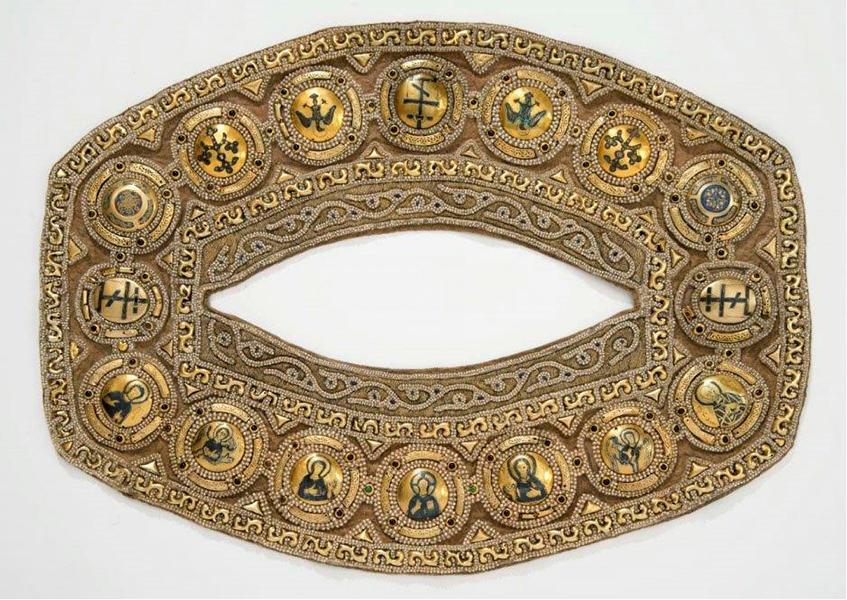
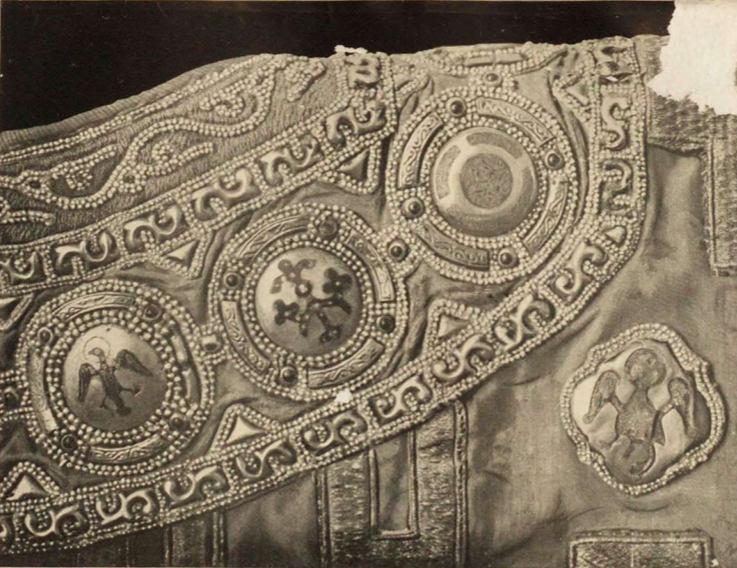




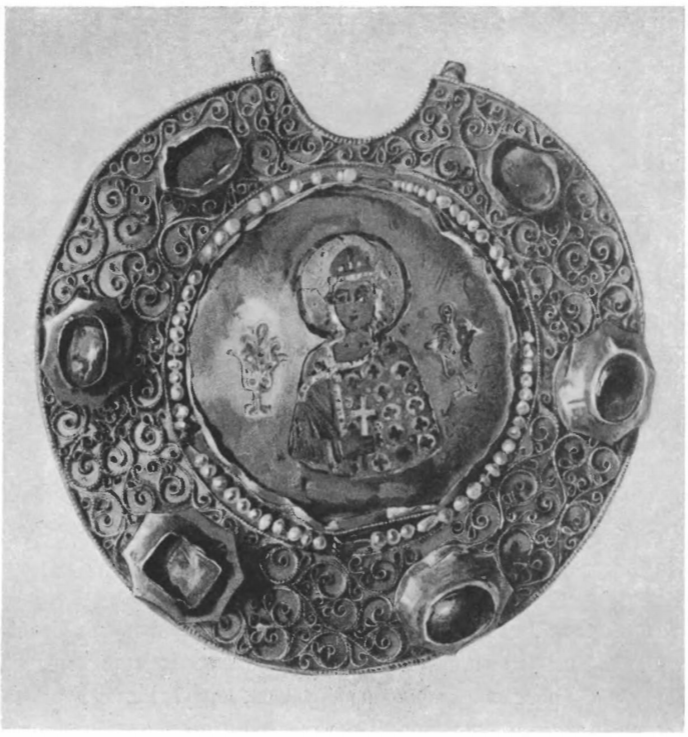
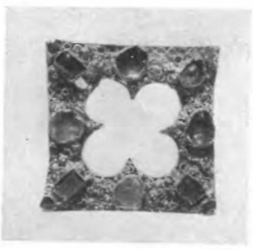
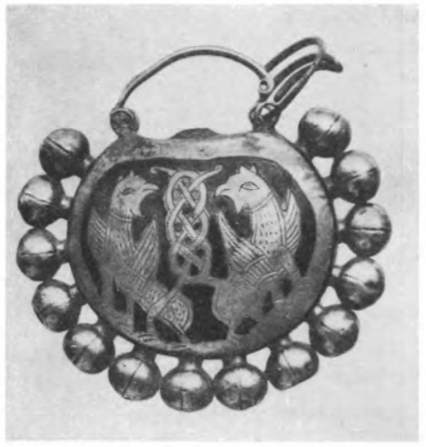
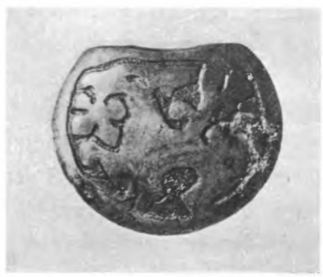
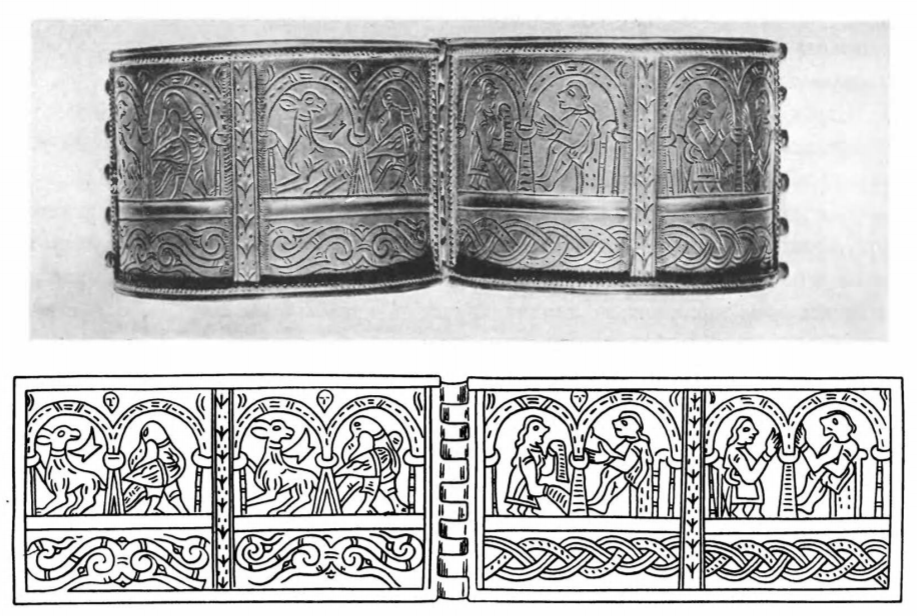
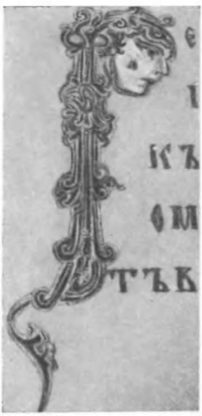

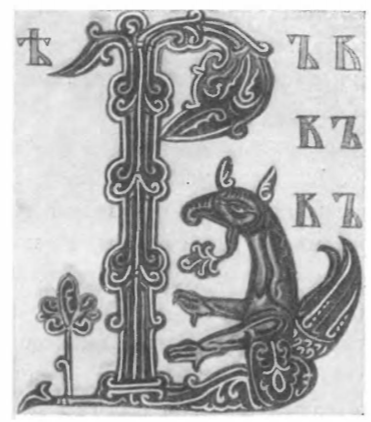
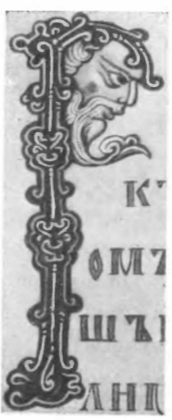

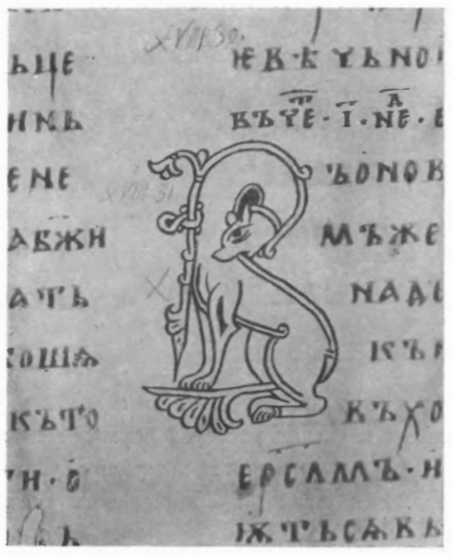
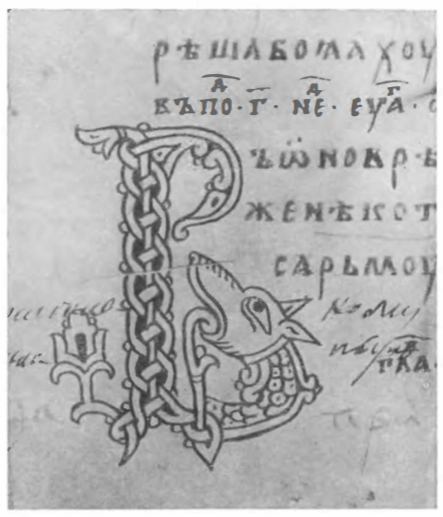


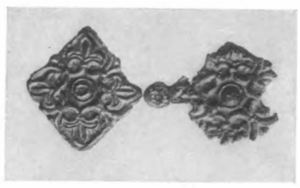
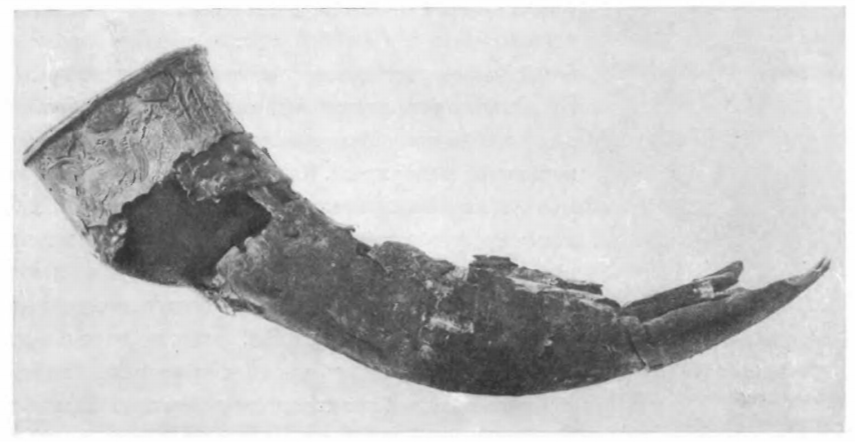
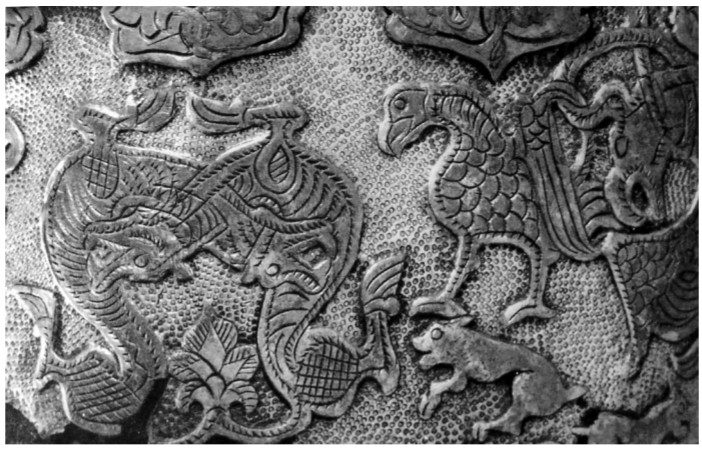
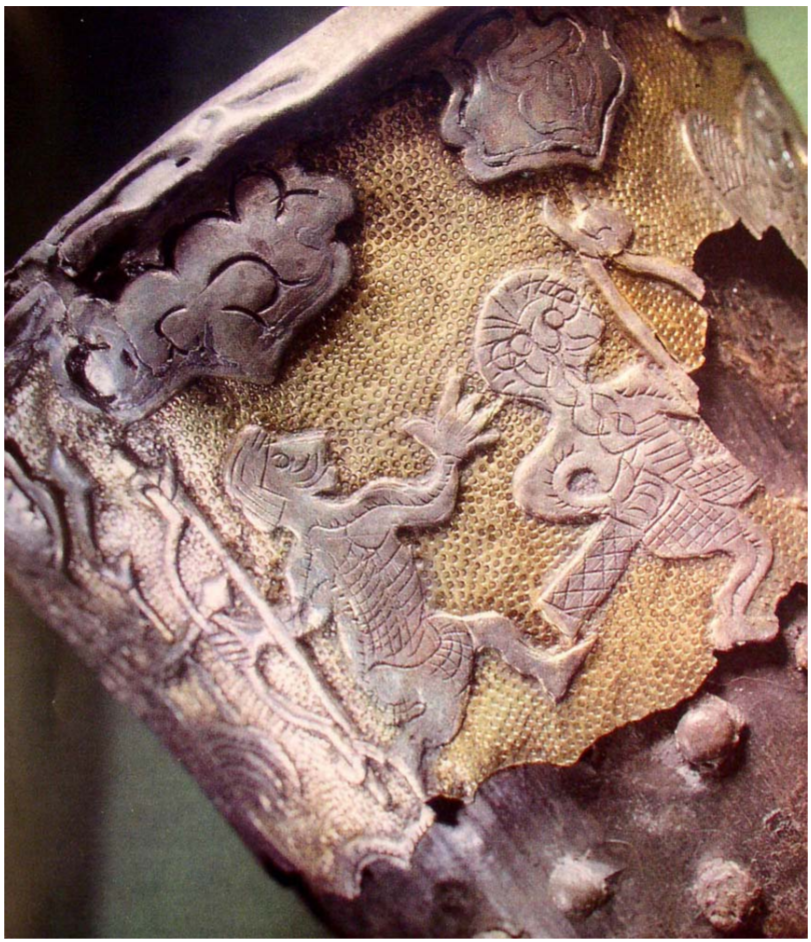

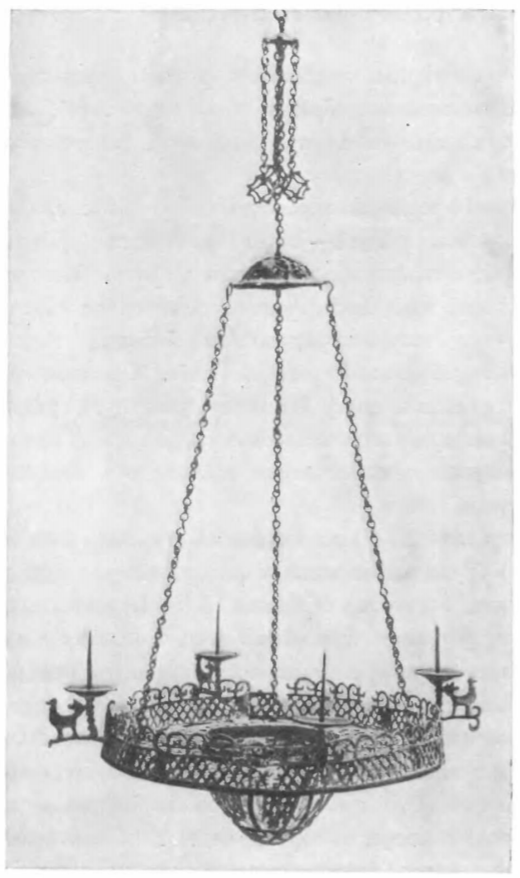
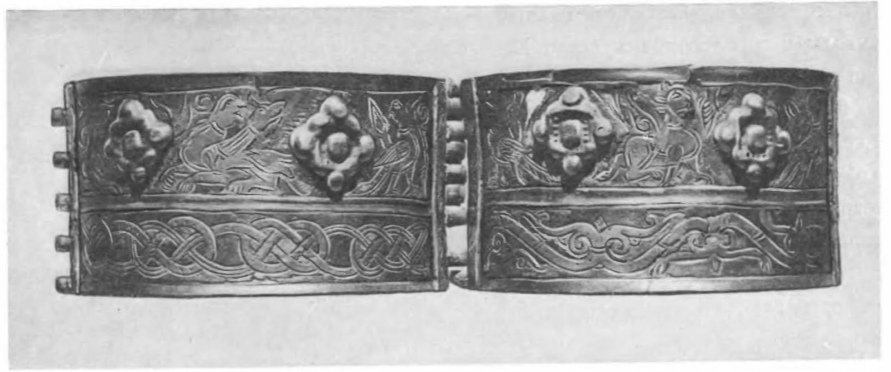
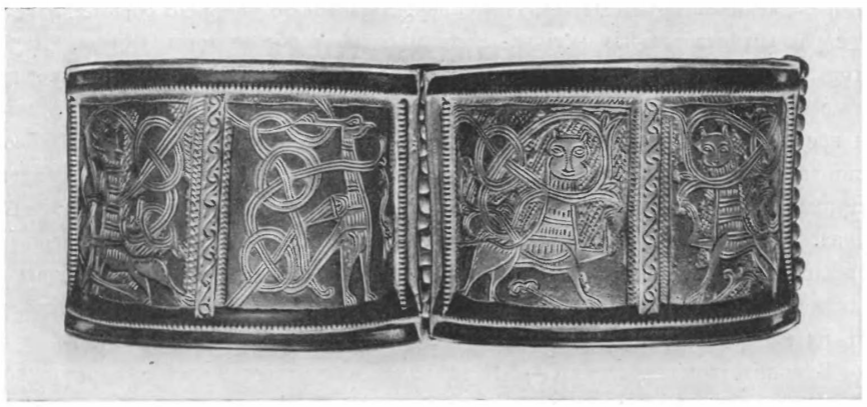

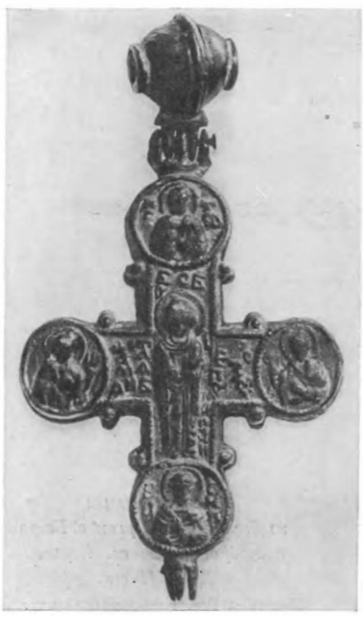
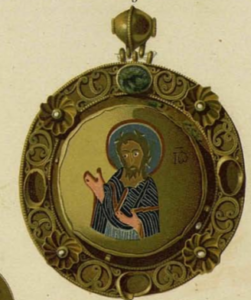
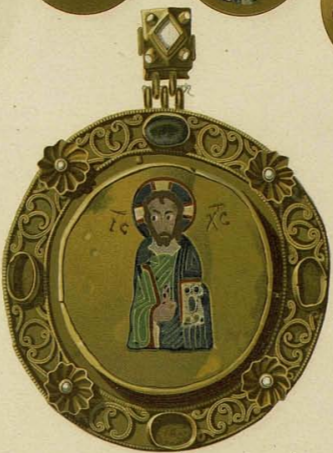

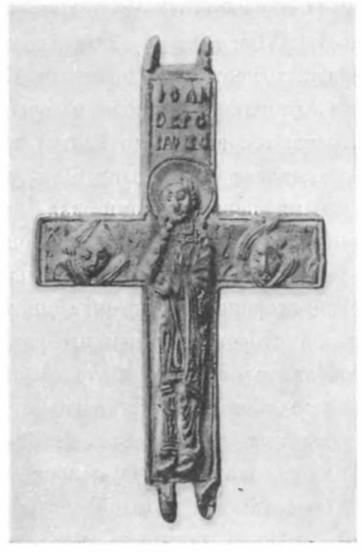
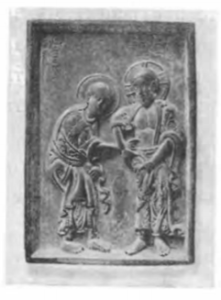

Excellent body of work, thank you.
Rogned Steingrimovna, OL